
107 minute read
Newsbook
Dichiarazione congiunta di CONFINDUSTRIA, MEDEF e BDI: l'Europa sia unita e lavori a soluzioni condivise
Introdurre nuovi strumenti finanziari comuni per anticipare le crisi future, istituire misure a breve termine e a basso costo per contenere i prezzi di gas ed elettricità per le imprese, ridurre la dipendenza dell’Europa dall’import di “materie prime critiche” ed evitarne carenze di approvvigionamento, avviare una tregua normativa per rilanciare la competitività dell'Europa e disegnare una politica fiscale che dia impulso agli investimenti pubblici. Queste, in estrema sintesi, sono le direttrici principali su cui si articola la Dichiarazione congiunta siglata lo scorso 1° dicembre a Roma da parte di CONFINDUSTRIA, MEDEF (Mouvement des Entreprises de France) e BDI (Bundesverband der Deutschen Industrie), in occasione del 4° Business Forum Trilaterale delle tre Confederazioni. Le Confindustrie di Italia, Francia e Germania - i tre principali Paesi manifatturieri d’Europa - hanno invitano i relativi governi e tutte le istituzioni competenti a livello europeo a porre la massima attenzione alle criticità che sta affrontando l'industria del vecchio Continente, soprattutto quella di piccola e media dimensione. Le previsioni per il 2023 indicano infatti crescita bassa o negativa e l'elevato tasso di inflazione sta iniziando a far sentire i suoi effetti. Proprio per questo occorre agire con grande senso di responsabilità, in modo graduale e proporzionato, evitando approcci ideologici che rischiano di minare la competitività di intere filiere industriali. La transizione verde è un processo ineludibile - si sottolinea nella dichiarazione - a cui l’industria partecipa attivamente, ma occorre procedere nei tempi e nei modi corretti in questa direzione, o si corre il ri-
Joint CONFINDUSTRIA, MEDEF, BDI declaration: Europe must be united and work on shared solutions
Introduce new, common financial tools to anticipate future crisis, institute short-term and low-cost measures to contain gas and electricity prices for businesses, reduce Europe’s dependence on imports of “crucial raw materials” and avoid gaps in supply, commence a normative truce to re-launch Europe’s competitiveness and design fiscal policy that gives impetus to public investments. These, very briefly, are the main directives contained in the joint declaration signed in Rome on December 1 by CONFINDUSTRIA, MEDEF (Mouvement des Enterprises de France) and BDI (Bundesverband der Deutchen Industrie) at the 4th Trilateral Business Forum of the three confederations. The business associations of Italy, France and Germany - representing Europe’s major manufacturing countries - invited their relative governments and all pertinent institutions Europe-wide to pay the utmost attention to the critical issues facing the Old Continent’s industries especially the SME. Predictions for 2023 in fact indicate low or negative growth, and a high rate of inflation is being to have an impact. Precisely because of this it is necessary to act with a great sense of responsibility, gradually and proportionately, avoiding ideological approaches that risk undermining the competitiveness of entire industrial sectors. The green transition is an inescapable process - the declaration stresses - in which industry actively participates, but it is necessary to proceed with the correct timing and methods in this direction, otherwise there is the risk
schio di perdere capacità produttiva. In questo senso, gli obiettivi già concordati non possono essere costantemente modificati, come invece sta accadendo con la revisione della direttiva sugli imballaggi e sui rifiuti di imballaggio. In merito alla necessità di anticipare le crisi future, questa deve poi diventare uno degli assi portanti dell’azione europea. Per questo, è fondamentale introdurre strumenti di finanziamento dedicati esclusivamente ad affrontare eventuali nuove grandi emergenze. L’Unione Europea deve inoltre adottare soluzioni immediate e condivise per contenere l'aumento vertiginoso dei prezzi dell'energia, assicurando al contempo che le politiche europee sul clima non pregiudichino il tessuto produttivo e l’occupazione. Nella dichiarazione si rimarca anche quanto sia determinante ridurre la nostra dipendenza dall’importazione di materie prime, e per questo CONFINDUSTRIA, MEDEF e BDI auspicano che la prossima proposta dell’UE relativa alle "materie prime critiche" sia basata su un'analisi approfondita dei fabbisogni presenti e futuri di tali materie e del loro impatto sul settore industriale, al fine di evitare eventuali carenze e minimizzare gli effetti negativi dovuti ai loro costi crescenti. Infine, "sosteniamo una riforma della governance economica europea che incoraggi gli investimenti pubblici. Vogliamo un’Europa unita e solidale, capace di lavorare a soluzioni condivise nell'interesse di tutti i suoi Stati membri", concludono le 3 Confederazioni. of losing production capacity. From this standpoint, the aims already agreed upon must not be constantly changed, as instead is happening with revision of the directive on packaging and packaging refuse. In regard to the need to anticipate future crises, this must become one of the pillars of European action. Making it fundamental to introduce financing tools devoted exclusively to dealing with possible big new emergencies. The European Union must also adopt immediate, shared solutions to contain the dizzying rise of energy prices, at the same time ensuring that European climate policies do not jeopardize production and employment. The declaration also states that it is determinant to reduce Europe’s dependence on imports of raw materials, and for this reason CONFINDUSTRIA, MEDEF and BDI hope that the EU’s next proposal concerning “crucial raw materials” will be based on an in-depth examination of present and future needs for such materials and their impact on the industrial sector, in order to avoid possible scarcities and minimize the negative effects caused by their rising costs. Finally, “we support a reform of European economic governance that encourages public investments. We want a united and supportive Europe, able to work at shared solutions in the interests of all its member states”, concluded the three confederations.
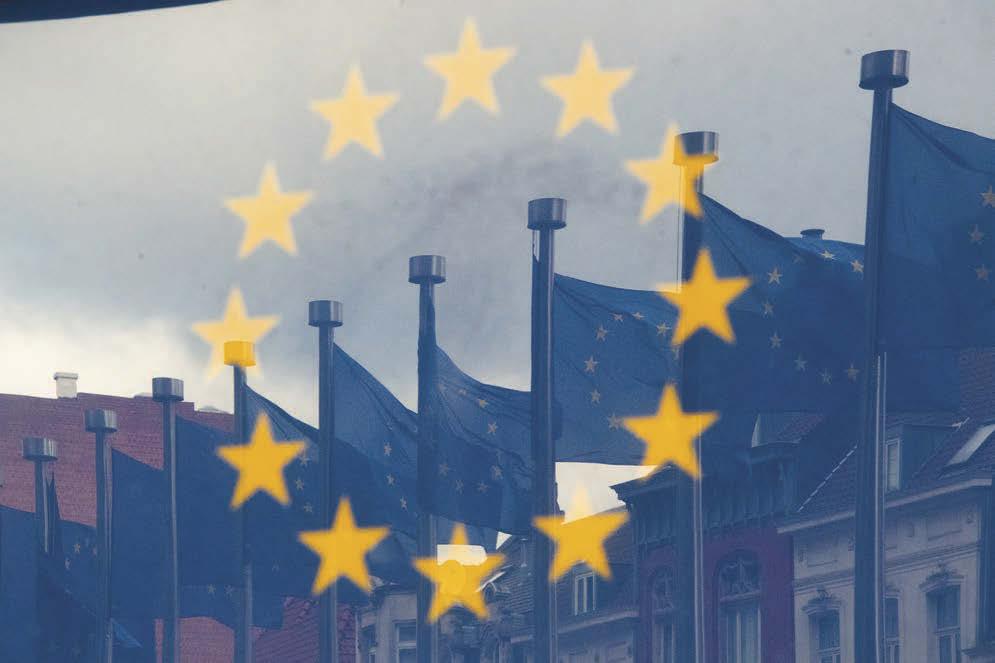

Istat: +0,5% Pil italiano nel 3° trimestre, +2,6% su anno
Nel 3° trimestre 2022 l'Istat ha stimato per il Pil italiano, corretto per gli effetti di calendario e destagionalizzato, un aumento dello 0,5% rispetto al trimestre precedente e del 2,6% in termini tendenziali, dati migliori delle previsioni degli analisti. La variazione del Pil già acquisita per il 2022 - che indica il possibile risultato di fine anno con un 4° trimestre a crescita zero - si è così portata a +3,9%. "La fase espansiva del Pil prosegue pertanto per il 7° trimestre consecutivo, ma in decelerazione rispetto al 2° trimestre dell'anno" - spiega l'Istat, sottolineando come il dato di luglio-settembre rifletta dal lato della produzione un calo di agricoltura e industria e un aumento marcato dei servizi (turismo in primis).
Dopo la cancellazione delle edizioni 2021 e 2022 a causa delle incertezze legate agli sviluppi della crisi pandemica a livello globale, dal 7 al 10 febbraio di quest'anno si rinnova l'appuntamento con la VITÓRIA STONE FAIR di Vitória - il principale evento fieristico brasiliano dedicato al comparto dei materiali lapidei e delle tecnologie e prodotti complementari -, per cui è attesa la presenza di oltre 300 espositori nazionali e esteri. MARMOMACCHINE INTERNATIONAL sarà presente alla VITÓRIA STONE FAIR con un info-corner dove le Aziende espositrici e gli Operatori in visita potranno trovare in distribuzione l’ultimo numero del magazine di riferimento per la filiera marmifera internazionale.


ISTAT: Italy’s GDP up 0.5% in the 3rd quarter, +2.6% for the year
For the 3rd quarter of 2022, corrected for calendar effects and seasonally adjusted, ISTAT has estimated GDP growth of 0.5% from the previous quarter and 2.6% tendentially, better than analysts predicted. The GDP variation acquired for 2022 - that indicates the possible result by the end of the year with a zerogrowth 4th quarter - thus rises to 3.9%. “The growth phase for GDP thus continues for the 7th consecutive quarter, but more slowly than in the 2nd quarter” ISTAT explained, emphasizing that the third-quarter figure reflected a drop in agriculture and industrial production and a marked increase in services (especially tourism).
The VITORIA STONE FAIR returns (February 7-10, 2023)
After cancellation of the 2021 and 2022 editions due to uncertainties tied to pandemic developments worldwide, the VITORIA STONE FAIR in Vitoria, Brazil, returns, from February 7 to 10, 2023. It is the main Brazilian event dedicated to the stone and techno-stone and complementary products sector, and more than 300 national and foreign exhibitors are expected to participate. MARMOMACCHINE INTERNATIONAL will be at the VITORIA STONE FAIR with its own info-corner where exhibitors and visiting operators will find the latest issue of the reference magazine for the international stone industry.

There’s a lot of work behind Beauty.
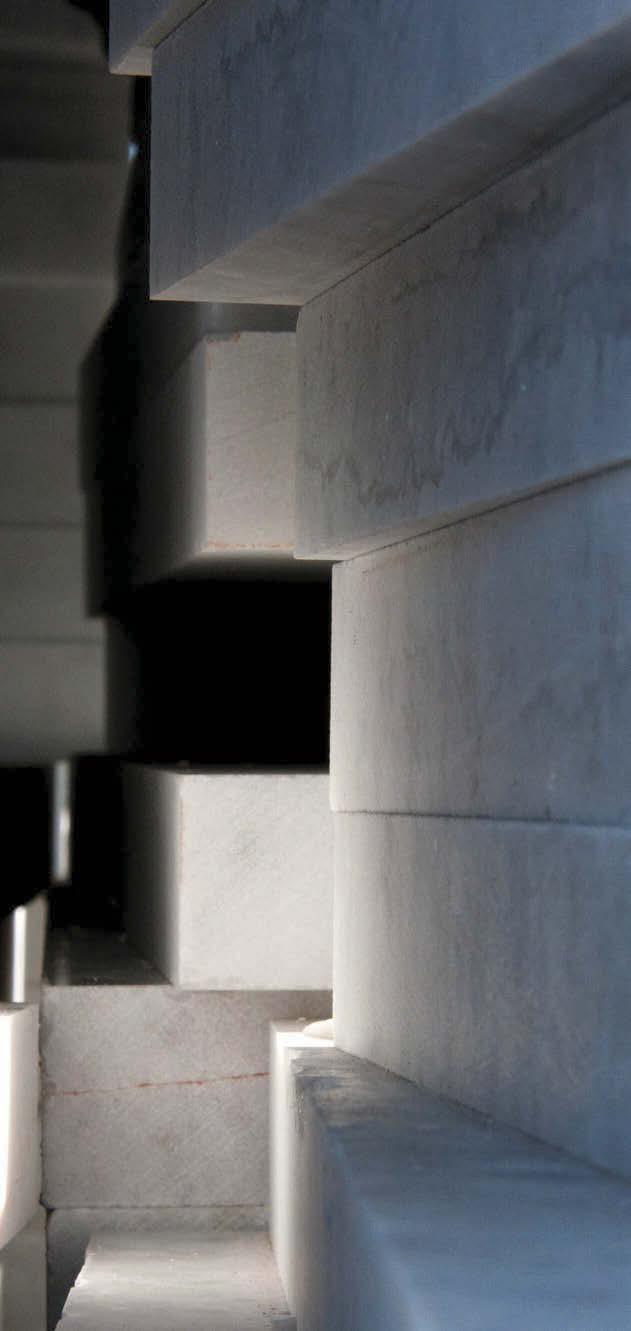


treemme@treemmesrl.eu Italy
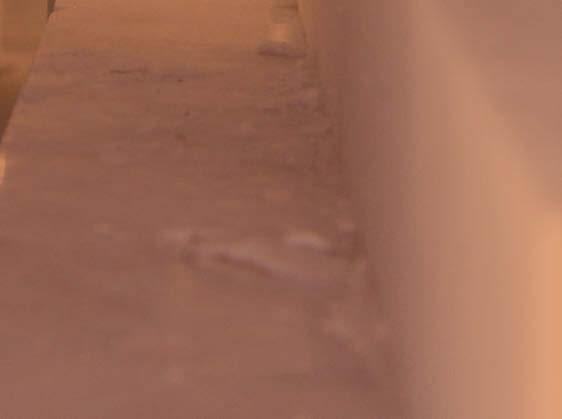

landigroup@landigroup.eu Italy TWO COMPANIES, SAME APPROACH: TO GUARANTEE HIGH QUALITY PRODUCTS, FAST DELIVERY AND EXCELLENT CUSTOMER SERVICE.
Si conferma la crescita dell'export italiano di pietre naturali: +14,3% nei primi 8 mesi del 2022
Secondo le statistiche ufficiali di settore elaborate dal Centro Studi di CONFINDUSTRIA MARMOMACCHINE nel periodo gennaio-agosto del 2022 le esportazioni complessive italiane di marmi, travertini, graniti e pietre naturali in genere è aumentato in valore del 14,3% rispetto allo stesso periodo dell'anno precedente, raggiungendo i 1.394 mln di euro. Sebbene in leggero calo rispetto al 1° semestre dell'anno (che aveva fatto registrare un incremento del 17,7%), questo dato si pone in continuità col trend di crescita emerso lo scorso anno (+20,8% rispetto al 2020), che aveva già permesso di recuperare pienamente i livelli di export pre-pandemia (+1,9% la differenza rispetto al 2019). Analizzando la composizione delle nostre esportazioni settoriali, emerge come il contributo fondamentale alla crescita sia stato fornito dalla componente dei materiali lavorati e semilavorati, le cui vendite all'estero nei primi 8 mesi del 2022 sono aumentate del 18% rispetto allo stesso periodo dell'anno precedente, per complessivi 1.133,7 mln di euro. Ricordiamo che i prodotti lavorati, oltre a essere quelli a
Growth for Italy’s natural stone exports confirmed: +14.3% in the first 8 months of 2022
According to official sector statistics processed by the CONFINDUSTRIA MARMOMACCHINE Studies Center, from January to August 2022 Italy’s overall exports of marbles, travertines, and natural stones generally increased in value by 14.3% from the same period the previous year, reaching worth of 1.394 million euros. Although slightly less than the figure for the first half of the year (which registered a 17.7% increase), this shows continuity with the growth trend seen last year (+20.8% from 2020), which had already made it possible to fully recoup the pre-pandemic export level (a +1.9% difference from 2019). Analyzing the composition of Italy’s stone sector exports, we see that a fundamental contribution to growth came from finished and semi-finished materials, whose foreign sales in the first 8 months of 2022 increased by 18% from the same period in 2021, for a total of 1,133.7 million euros. We remind readers that finished products, in addition to being the ones with highest added value, have traditionally ac-
Export materiali lapidei lavorati e semilavorati italiani Classifica primi 10 Paesi di destinazione - Gennaio/Agosto 2022 (dati in euro)
Exports of Italian finished and semi-finished stone materials Top 10 Buyers - January/August 2022 (data in euros)
COUNTRY TOTAL AUGUST 2021 COUNTRY TOTAL AUGUST 2022 Δ % POS. 2022 POS. 2021 UNITED STATES 264.353.522 UNITED STATES 343.974.425 30,1 1 1 GERMANY 92.528.390 GERMANY 108.433.661 17,2 2 2 FRANCE 58.950.004 FRANCE 67.906.297 15,2 3 4 SWITZERLAND 60.079.415 SWITZERLAND 66.514.950 10,7 4 3 SAUDI ARABIA 31.216.135 SAUDI ARABIA 42.751.776 37,0 5 6 UNITED KINGDOM 43.599.509 UNITED KINGDOM 39.212.508 -10,1 6 5 AUSTRIA 29.332.723 AUSTRIA 31.567.979 7,6 7 7 UNITED ARAB EMIRATES 24.790.689 UNITED ARAB EMIRATES 30.920.188 24,7 8 8 AUSTRALIA 21.539.594 AUSTRALIA 23.945.264 11,2 9 9 CANADA 18.954.662 CANADA 22.263.316 17,5 10 12 OTHER COUNTRIES 315.087.483 OTHER COUNTRIES 356.185.233 13,0 TOTAL 960.432.126 TOTAL 1.133.675.597 18,0
più alto valore aggiunto, rappresentano storicamente oltre i tre quarti del valore totale dell'export lapideo italiano, con una quota che nel 2022 ha raggiunto l'81,3%. Si sono invece mantenute sostanzialmente sui buoni livelli del 2021 (+0,6) le nostre vendite all'estero di materiali grezzi, che sono state pari a 260,3 mln. Per quanto riguarda i mercati di destinazione, secondo il report statistico di CONFINDUSTRIA MARMOMACCHINE anche nel periodo gennaio-agosto 2022 il 1° acquirente di blocchi di marmo, granito e pietre naturali estratti in Italia risulta essere la Cina che - sebbene in arretramento dell'8,9% rispetto ai livelli record fatti segnare nel 2021 - totalizza 128,5 mln di import (pari a circa il 50% del totale del nostro export di grezzi), seguita da un'India in forte ripresa (+90,9%) con 32 mln. Relativamente al segmento dei lavorati e semilavorati si conferma l'ottimo stato di salute del mercato statunitense - in crescita del 30,1% rispetto ai primi 8 mesi del 2021 - che conferma la sua leadership indiscussa nella classifica delle aree di destinazione con acquisti per 344 mln, pari a circa il 30,3% del valore totale delle nostre esportazioni di lastre e prodotti finiti. Va sottolineato che hanno fatto segnare un forte aumento anche le vendite verso i nostri principali partner commerciali europei, soprattutto in Germania (2° buyer con 108,4 mln di import, +17,2%), in Francia (3° con 67,9 mln, +15,2%,), in Svizzera (4° con 66,5 mln, +10,7%) e in Austria (7° con 31,6 mln, +7,6%), mentre hanno fatto registrare una sensibile flessione le importazioni dal Regno Unito (-10,1%), che tuttavia con 39,2 mln si piazza al 6° posto tra i mercati di destinazione. Di segno estremamente positivo l'andamento dell'export di prodotti lapidei lavorati Made in Italy verso l'area del Golfo Persico, in particolare in Arabia Saudita (5° con 42,8 mln, +37%) e negli Emirati Arabi Uniti (8° con 30,9 mln, +24,7%). Chiudono la top ten dei buyers settoriali altri due importanti Paesi extra UE come Australia (9° con 23,9 mln, +11,2%,) e Canada (10° con 22,3 mln, +17,5%). I dati dei primi 8 mesi del 2022 confermano pertanto una crescita generalizzata del nostro export su quasi tutti i principali mercati di riferimento per le produzioni lapidee italiane. Sebbene sia difficile fare previsioni in un contesto complesso come quello che le Aziende stanno attualmente vivendo, alla luce delle criticità emerse nella seconda parte dell'anno - come l’esplosione nei costi dei fattori produttivi e i prezzi record dell'energia - è tuttavia lecito attendersi nell'ultimo trimestre dell'anno un'attenuazione di questo trend positivo, che non dovrebbe tuttavia impedire all'industria lapidea italiana di chiudere il 2022 con un fatturato estero in crescita per il secondo anno consecutivo dopo la caduta del 2020. counted for three-quarters of the total value of Italian stone exports, with a share that in 2022 reached 81.3%. Remaining essentially on the good levels of 2021 (+0.6%) were exports of raw materials, worth 260.3 million. With regard to export markets, according to the CONFINDUSTRIA MARMOMACCHINE statistical report, from January to August 2022 the top buyer of blocks of marble, granite and natural stones extracted in Italy was China which - although backsliding by 8.9% from the record levels registered in 2021 - totaled 126.5 million in imports (or 50% of Italy’s total raw exports), followed by a rebounding India (+90.9%) with 32 million. As for the finished and semi-finished products sector, the excellent health of the US market - up 30.1% from the first 8 months of 2021 - confirms its undisputed leadership among destination markets with purchases worth 344 million euros or 30.3% of the total value of Italy’s exports of slabs and finished goods. It should be emphasized that there was also a heavy increase in sales to Italy’s major European trading partners, above all to Germany (second buyer with 108.4 million in imports, + 17.2%), France (third with 67.9 million, +15.2%), Switzerland (fourth with 66.5 million, +10.7%) and Austria (seventh with 31.6 million, +7.6%) while there was a notable downturn in imports by the United Kingdom (-10.1%) although with purchases worth 39.2 million euros it was still the sixth-ranking buyer. Extremely positive was the export trend for finished stone products Made in Italy to the Persian Gulf area, in particular to Saudi Arabia (fifth with 42.8 million, +37%) and the United Arab Emirates (eighth with 30.9 million, + 24.7%). Concluding the top ten buyers ranking were two other non-EU countries, Australia (ninth with 23.9 million, +11.2%) and Canada (tenth, with 22.3 million, + 17.5%). The figures for the first 8 months of 2022 therefore confirm a generalized growth in Italy’s exports to almost all the major reference markets for stone products. While it is difficult to make predictions in a complex context like the one that companies are currently experiencing, in light of the critical points that emerged in the second half of the year - like the explosion of production factor costs and record energy prices - it is nonetheless licit to expect an attenuation of this positive trend in the final quarter of the year, although this should not prevent the Italian stone sector from ending 2022 with increasing foreign revenue for the second consecutive year after the losses of 2020.
Presentato “Essere Marmo”, il Manifesto di Sostenibilità del Marmo di Carrara
Lo scorso 6 dicembre Carrara Marble Way - Consorzio che riunisce le principali Aziende del distretto lapideo apuano - nell’ambito della sua attività di promozione e valorizzazione della cultura e della filiera produttiva del marmo di Carrara, ha presentato il Manifesto di Sostenibilità “Essere Marmo” (www.esseremarmo.it). Il Manifesto nasce con l’obiettivo di stringere un nuovo patto tra le Imprese, la comunità e le istituzioni "per perseguire l’obiettivo dello sviluppo sostenibile e costruire una nuova infrastruttura di ricerca e sviluppo, creativa e formativa in grado di rendere Carrara il centro all’avanguardia della Produzione, dell’Innovazione, dell’Economia Circolare, della Tecnologia, della Cultura, della Formazione, dell’Arte, del Design e dell’Artigianato del Marmo". Realizzato in partnership con Italia Circolare - piattaforma editoriale che valorizza, racconta e comunica il Made in Italy dell’Economia Circolare - e sottoscritto da Confindustria Livorno Massa Carrara e dalla Fondazione Marmo Onlus, il Manifesto definisce a partire da 10 verbi chiave quello che il Marmo di Carrara ha fatto e può continuare a fare per il suo territorio, in campo economico, produttivo e formativo e come fattore di coesione sociale e culturale per lo sviluppo dell’intera comunità. Le Imprese firmatarie del Manifesto verranno invitate a definire il know-how delle loro migliori pratiche in termini di innovazione, circolarità e sostenibilità economica, sociale e ambientale per la creazione del primo Report di Innovazione e Sostenibilità del settore lapideo apuano, un ulteriore strumento di valorizzazione della qualità e dell’unicità delle Imprese del settore e della comunità che le rappresenta.
“Being Marble” presented, the Carrara marble sustainability manifesto
On December 6 the Carrara Marble Way - the consortium that unites the main companies in the Apuan stone district - in the context of promoting and valorizing Carrara marble culture and industry, presented its sustainability manifesto, “Being Marble” (www.esseremarmo.it). The manifesto was written with the aim of establishing a new pact between companies, the community and institutions “to pursue the goal of sustainable development and build a new infrastructure of research and development, creativity and education able to make Carrara the vanguard center of production, innovation, circular economy, technology, culture, education, art, design and marble artisanship”. Created in partnership with Italia Circolare (Circular Italy) - a publishing website that valorizes, recounts and communicates the Made in Italy of the circular economy - and underwritten by Confindustria Livorno Massa Carrara and the non-profit Marble Foundation, the manifesto defines, starting from 10 key words, what Carrara marble has done and will continue to do for its territory in economic, productive and educational terms, and as a factor of social and cultural cohesion for the development of the entire community. The companies signing the manifesto will be invited to define the know-how of their best practices in terms of innovation, circularity and economic, social and environmental sustainability to create the first Sustainability and Innovation Report for the Apuan stone sector, a further tool for valorizing the quality and uniqueness of the sector and the community that represents it.

Genius loci e pietra naturale per un edificio termale
La realizzazione di un centro termale a Ponte di Legno, una delle più importanti località di villeggiatura montana d’Europa, è stata l’occasione progettuale per instaurare un dialogo con le peculiarità ambientali del luogo – il cosiddetto genius loci - contraddistinto da uno straordinario paesaggio naturale dominato dall’Adamello. E proprio la diorite dell’Adamello è stata la pietra naturale scelta dai progettisti come materiale protagonista di questo intervento architettonico che, per il carattere iconico delle sue forme, costituisce anche una straordinaria occasione di valorizzazione ambientale e urbana. Il centro termale sarà inserito al centro dell’abitato, e pertanto lo sviluppo volumetrico ha mantenuto un’altezza media degli edifici che non ha determinato quell’effetto di decontestualizzazione dell’architettura nuova dai luoghi di insediamento, come avvenuto anche in località limitrofe. Il progetto di un centro termale in una posizione così integrata nel tessuto residenziale propone pertanto un modello alternativo ai centri termali isolati dall’abitato, facendolo diventare un importante riferimento per la comunità. L’architettura proposta dallo studio Botticini+Facchinelli si relaziona pertanto a due ambiti di riferimento: quella dell’abitato con cui si confronta per la scala degli edifici circostanti di cui non supera l’altezza, e la sua conformazione architettonica con il profilo delle montagne all’orizzonte ed in particolare al massiccio dell’Adamello con cui definisce una relazione sia visuale che evocativa nella sua forma. Una relazione con l’intorno enfatizzata come dicevamo dalla scelta di prediligere la monomatericità della pietra, la Diorite dell’Adamello, lavorata in
Genius loci and natural stone for a thermal spa building
Creating a thermal spa in Ponte di Legno, one of Europe’s most important mountain resorts, was a design occasion to establish a dialogue with the environmental particularities of the place – its so-called genius loci – featuring an extraordinary natural landscape dominated by Mount Adamello. And precisely the diorite of Mount Adamello was the natural stone the designers chose as the leading material for this architectural work that, for the iconic character of its sgapes, also constitutes an extraordinary occasion for environmental and urban valorization. The thermal spa will be part of the town and so its volumetric development maintained the average height of the existent buildings, avoiding the decontextualization of the new architecture from its site, as happened even in nearby localities. The project for a spa in a position so integrated with the residential weave thus proposes a model alternative to the spa facilities isolated from it, making it become an important reference for the community. The architecture proposed by the Botticini+Facchinelli design firm therefore relates to two ambits of reference: that of the town, not exceeding the height of the surrounding buildings, and its architectural conformation with the profile of the mountains on the horizon and in particular with the Adamello massif with which it establishes a relationship both visual and evocative of its shape. A relationship that, as we said, emphasizes the choice of preferring a single material, the Adamello diorite, worked in vertical ashlars and used as an element characterizing the volumes. This choice gives the whole a character of monumentality and domestic

conci verticali e utilizzata come elemento caratterizzante dei volumi. Questa scelta conferisce all’insieme un carattere di monumentalità e rappresentatività domestica, non aggressiva ma fortemente identitaria, che con i sui volumi fatti di piani pendenti rimanda ai picchi dell’Adamello ma anche agli archetipi delle case camune disegnate sui massi di Capo di Ponte. L'integrazione del volume nel lotto di riferimento è caratterizzata dall’occupazione quasi integrale del suolo, ad esclusione di quegli stacchi tra i volumi che li incastra tra loro e li orienta aprendo la vista verso sud, dove il paesaggio diviene più aperto anche in relazione alla piazza anch'essa ridefinita come luogo immaginato per manifestazioni collettive. I progettisti affermano che questo edificio si potrebbe poeticamente definire come un cristallo di roccia dell’Adamello che si è fermato rompendosi e riformandone le guglie nel fondovalle, un edificio iconico e fortemente attrattivo ma discreto, equilibrato, in sintonia con il luogo e la sua scala insediativa. Altro aspetto fondativo del progetto è l’essere fortemente introverso per avere la massima privacy dall’esterno e permettere al contempo punti di osservazione scenografici dall’interno sul paesaggio dei profili montani circostanti. Centrale nella definizione dell’architettura è anche il ruolo della luce, che diviene materiale preminente nel rivelare lo spazio, i volumi, la matericità della pietra scabra sia all’interno nell'essere piano e rivestimento che dall’esterno. Un’ulteriore aspetto importante in relazione all’involucro è ancora una volta la pietra naturale che consente la ventilazione della facciata che a livello estetico richiama quello dei muri antichi che segnano gli edifici della val Camonica. I materiali utilizzati per l’intero edificio saranno prevalentemente a “Km zero”, e l’impiego della pietra locale costituirà indirettamente una promozione dell’economia territoriale vista la risonanza mediatica di cui godrà l’edificio.

Photo credit: Botticini+Facchinelli Architects
representativeness, not aggressive but strongly identifying, whose sloping planes cite the peaks of the Adamello but also the archetypes of the Val Camonica houses drawn on the boulders of Capo di Ponte. The volume’s integration into the reference lot features an almost total occupation of the land, except for those breaks between the volumes embedded into one another, and orients them, opening the view southwards where the landscape becomes more open, also in relation to the piazza, itself redefined as a place imagined for collective events. The designers state that this building could poetically be defined as a rock crystal of the Adamello that halted, breaking and reforming the spires of the valley floor, an iconic and highly attractive but discreet building, balanced, in harmony with the place and its residential scale. Another fundamental aspect of the design is being strongly introverted to afford the maximum privacy from outside and yet permit scenic observation points of the outlines of the surrounding mountains from inside. Central to it is also the role played by light, which becomes the preeminent material revealing the space, volumes and materiality of the rough stone both inside and out. A further important aspect in relation to the covering is once again the natural stone that permits the ventilation of the façade, on the aesthetic level recalling the ancient walls marking the Val Camonica buildings.

Foster+Partners vince il concorso per il King Salman International Airport
Lo studio Foster + Partners ha vinto il concorso per progettare il masterplan del King Salman International Airport che consoliderà la posizione della capitale dell’Arabia Saudita come polo logistico globale, stimolandone il commercio e il turismo e qualificandola ulteriormente come “ponte” tra est e ovest. L'aeroporto internazionale King Salman dovrebbe essere uno dei più grandi aeroporti del mondo, con una superficie di circa 57 km² e comprenderà anche 12 km² di strutture di supporto aeroportuale, strutture residenziali e ricreative, punti vendita e altri immobili destinati alla logistica. Stime prevedono che l’aeroporto punta ad accogliere fino a 120 milioni di viaggiatori entro il 2030 e 185 milioni di viaggiatori, con la capacità inoltre di gestire 3,5 milioni di tonnellate di merci, entro il 2050. Obiettivo del progetto sarà quello di rendere l’hub una vera e propria cittadella incentrata sulla soddisfazione delle esigenze del viaggiatore, attraverso l’implementazione di un’operatività innovativa che faciliterà l’esperienza del viaggio. Nella composizione architettonica saranno tenute in alta considerazione l'identità di Riyadh e la cultura saudita, per garantire un contesto unico ai visitatori e ai viaggiatori in transito. Il tutto con la sostenibilità al centro: il nuovo aeroporto punta infatti ad ottenere la certificazione LEED Platinum incorporando soluzioni ecologiche all'avanguardia nel suo design, e sarà completamente alimentato da energia rinnovabile. Luke Fox, Head of Studio di Foster + Partners, ha dichiarato: “Il nuovo King Salman International Airport ripenserà il concetto di terminal tradizionale, collegando i passeggeri alle esperienze sensoriali della città, con elementi naturali, luci temperate e strutture all'avanguardia".
Foster + Partners wins the competition for the King Salman International Airport
The Foster + Partners architecture firm has won the competition to design the masterplan for the King Salman International Airport that will consolidate the Saudi Arabian capital’s position as a global logistics hub, sitmulating commerce and tourism and further qualifying it as a “bridge” between East and West. The King Salman International Airport, Riyadh, should be one of the world’s biggest, covering an area of some 57 square kilometers and also including 12 square kilometers of airport support structures, residential and recreational facilities, shops and other buildings intended for logistics. Estimates foresee that the airport aims to service up to 120 million passengers by 2030 and 185 million (plus the capacity to handle 3.5 million tons of cargo) by 2050. The aim of the project is to make the hub an actual town focused on meeting travelers’ needs by implementing an innovative operational mode that will enhance the travel experience. The architectural composition will pay great attention to the identity of Riyadh and Saudi culture to give visitors and passengers in transit a unique context. The whole will have sustainability at its center: in fact, the new airport aims to obtain LEED Platinum certification, incorporating vanguard ecological concepts in its design, and will be completely powered by renewable energy. Luke Fox, the head of Foster + Partners, declared that “The new King Salman International Airport will rethink the traditional concept of terminal, connecting passengers to a sensorial experience of the city, with natural elements, soft lighting and vanguard facilities”.
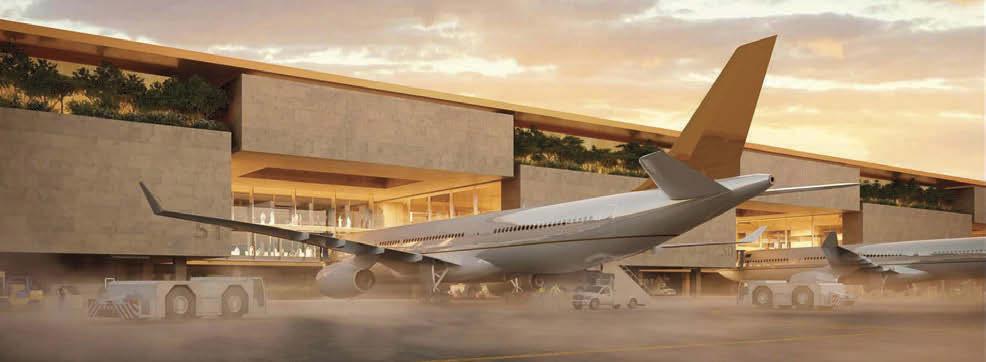
INAIL: in calo le denunce di morti sul lavoro
Stando ai dati diffusi dall’INAIL nel suo report periodico, nei primi dieci mesi del 2022 le denunce di infortunio sul lavoro presentate tra gennaio e ottobre sono state 595.569 – equivalenti a un +32,9% rispetto allo stesso periodo del 2021) - 909 delle quali con esito mortale (in calo del -10,6%). INAIL ha tuttavia sottolineato come gli open data pubblicati sui primi 10 mesi siano provvisori e il loro confronto richiede cautele. Per quantificare appieno il fenomeno sarà quindi necessario attendere il consolidamento dei dati dell'intero 2022, con la conclusione dell'iter amministrativo e sanitario relativo a ogni denuncia di infortunio, anche se il trend in calo degli infortuni mortali è senz’altro una notizia molto positiva. INAIL ha inoltre evidenziato come nei primi 10 mesi del 2022 l'aumento delle denunce di infortunio nel complesso è stato dovuto in parte al più elevato numero di denunce di infortunio da Covid-19 e in parte alla crescita degli infortuni "tradizionali", sia in occasione di lavoro che in itinere. Mentre il calo di quelle mortali è legato al notevole minor peso delle morti da contagio, a cui si contrappone però il contestuale incremento dei decessi in itinere, ovvero quelli occorsi al lavoratore durante il normale percorso di andata e ritorno dal luogo di abitazione a quello di lavoro. Come anticipato sopra, le denunce di infortunio sul lavoro nel complesso aumentano del 32,9% rispetto ai primi 10 mesi del 2021, del 41,3% rispetto ai primi 10 mesi del 2020 e dell'11,5% rispetto al periodo gennaio-ottobre 2019. Nel dettaglio si registra - rispetto ai primi 10 mesi del 2021 - un aumento del 35,4% per i casi avvenuti in occasione di lavoro e del 17,7% per quelli in itinere (da 62.403 a 73.422).
INAIL: reports of workplace deaths diminishing
According to data issued by INAIL (the Italian Insurance Institute for Workplace Injuries) in its periodic report, in the first ten months of 2022 reports of workplace accidents/illnesses numbered 595,569 – up 32.9% from January to October 2021 – 909 of which were fatal (down by 10.6%). However, INAIL emphasized that the open data published for the first 10 months are provisional and comparison requires caution. So to fully quantify the phenomenon it will be necessary to wait for consolidation of data for all of 2022, with the conclusion of the administrative and health procedures for every accident report, even though the downward trend for workplace deaths is undoubtedly very good news. INAIL also pointed out that in the first 10 months of 2022 the increase in overall accident/illness reports was partly due to the higher number of reports of Covid-19 contagions and partly due to the increase in “traditional” accidents, both at work and in traveling to and from work. While the decrease in fatalities is tied to the lesser weight of deaths from contagion it is counterbalanced by a contextual increase in deaths going routinely to and from work. As stated, workplace accident/illness reports increased by 32.9% from the first 10 months of 2021, by 41.3% from the first 10 months of 2020 and by 11.5% from January to October 2019. In detail, compared to the first 10 months of 2021 there was an increase of 35.4% for cases in the workplace and of 17.7% for cases en route to/from the workplace (from 62,403 to 73,422).

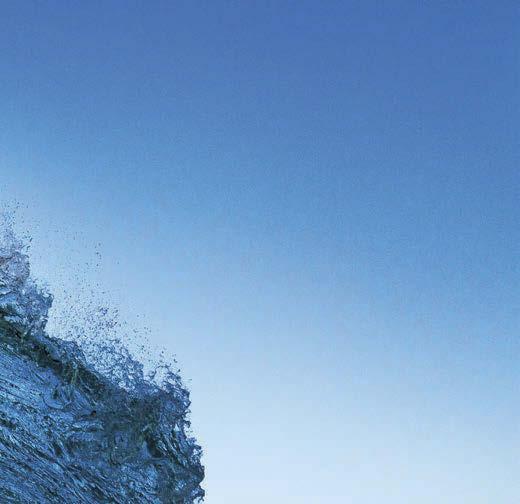








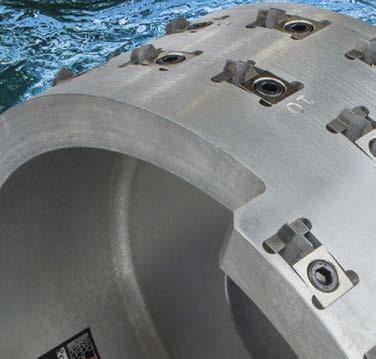



Statistiche tecnologie lapidee italiane: lieve calo delle esportazioni (-4,8%) nel periodo gennaio-agosto 2022
Nei primi 8 mesi del 2022 il valore delle esportazioni dei produttori italiani di macchine, impianti, utensili e altre attrezzature per l'estrazione e la lavorazione delle pietre naturali ha fatto segnare una diminuzione su base annua del 4,8%. A rilevarlo sono i dati elaborati dal Centro Studi di CONFINDUSTRIA MARMOMACCHINE, che indicano che nel periodo gennaio-agosto le vendite all'estero delle nostre tecnologie settoriali sono state pari a 699,7 mln di euro, contro i 734,9 mln dello stesso periodo dell'anno precedente. Questo calo può sicuramente essere in parte spiegato da un "rimbalzo" fisiologico dopo gli ottimi livelli raggiunti del 2021, quando si era registrato un recupero del 18,5% che aveva riportato l'export del comparto sui livelli pre-pandemia (+0,3% la differenza nei confronti del 2019), ma va tuttavia segnalato che negli ultimi mesi si è assistito ad un forte rallentamento degli investimenti produttivi in alcuni importanti mercati target, in particolare nel Regno
Italian stone technology statistics: a slight drop in exports (-4.8%) from January to August 2022
In the first eight months of 2022 the worth of exports from Italian makers of machines, installations, tools and equipment to extract and process natural stones showed a decline on an annual basis of 4.8%. Revealing this was the data processed by the CONFINDUSTRIA MARMOMACCHINE Studies Center, which showed that in the period from January to August foreign sales of Italian stone technologies were worth 699.7 million euros versus the 734.9 million of the same period the previous year. This decline can surely be partly viewed as a physiological reaction after the excellent levels reached in 2021, when there was a recoup of 18.5% that brought the Italian techno-stone sector back to prepandemic levels (+0.3% the difference from 2019) but it also should be mentioned that in recent months there was a big slowdown in production investments on several important target markets, in particular in the United Kingdom, in China - which continues to be penalized by restrictions to contain the pandemic - and in Egypt, with the latter two
Export macchine e attrezzature italiane per la lavorazione delle pietre ornamentali Classifica primi 10 Paesi di destinazione - Gennaio/Agosto 2022 (dati in euro)
Exports of Italian stone-working machinery and equipment Top 10 Buyers - January/August 2022 (data in euros)
COUNTRY TOTAL AUGUST 2021 COUNTRY TOTAL AUGUST 2022 Δ % POS. 2022 POS. 2021 UNITED STATES 98.645.078 UNITED STATES 128.846.562 30,6 1 1 SPAIN 48.257.915 SPAIN 46.981.418 -2,6 2 2 GERMANY 34.884.747 GERMANY 38.839.390 11,3 3 5 FRANCE 28.345.341 FRANCE 38.640.387 36,3 4 8
INDIA POLAND 25.193.177 INDIA 33.662.283 POLAND
35.001.833 38,9 5 10 33.389.356 -0,8 6 6 CANADA 26.019.653 CANADA 31.821.613 22,3 7 9 BRAZIL 19.320.113 BRAZIL 28.457.644 47,3 8 12 UNITED KINGDOM 36.986.749 UNITED KINGDOM 26.360.403 -28,7 9 4 PORTUGAL 31.149.951 PORTUGAL 22.340.967 -28,3 10 7 OTHER COUNTRIES 352.474.509 OTHER COUNTRIES 268.995.130 -23,7 TOTAL 734.939.516 TOTAL Source: CONFINDUSTRIA MARMOMACCHINE on ISTAT data 699.674.702 -4,8
Unito, in Cina - che continua a essere penalizzata dalle restrizioni per contenere la pandemia - ed in Egitto, con questi ultimi due Paesi che sono addirittura usciti dalla classifica dei primi 10 Paesi di destinazione. A livello più generale, il quadro che emerge dal dato dei primi otto mesi del 2022 è comunque di una sostanziale tenuta per le vendite all'estero dei costruttori italiani di tecnologie per marmi e graniti - le cui esportazioni rappresentano in media una quota vicina all'80% del fatturato complessivo del settore -, che fino ad ora hanno saputo dimostrare una straordinaria capacità di adattamento e di reazione alle difficoltà legate all’attuale situazione internazionale. Analizzando nel dettaglio la classifica dei primi 10 Paesi di destinazione emerge innanzitutto l'aumento record delle nostre esportazioni verso gli Stati Uniti (+30,6% rispetto al periodo gennaio-agosto 2021), che si sono confermati 1° mercato per le tecnologie lapidee italiane con importazioni per 128,8 mln di euro. Sono invece rimaste sostanzialmente stabili le vendite verso il nostro 2° buyer, la Spagna (-2,6% rispetto agli ottimi livelli del 2021, per complessivi 47 mln), mentre sono in discreta crescita quelle verso la Germania (+11,3%), sul terzo gradino del podio con acquisti per 38,8 mln. Tra i mercati UE si segnalano in deciso aumento le importazioni di macchine lavorazione marmo italiano dalla Francia (+36,3%, 4° con 38,6 mln) e la tenuta della Polonia (-0,8%, 6° con 33,4 mln). Tra le note più positive del 2022 va sicuramente annoverato il consolidamento della crescita delle nostre vendite di tecnologie verso due storici partner extra UE come India (+38,9%, 5° con 35 mln) e Brasile (+47,3%, 8° con 28,5 mln), ma anche la buonissima performance del Canada (+22,3, 7° con 31,8 mln). Si segnala in flessione invece l'export verso Regno Unito (-28,7%, 9° con 26,4 mln) e Portogallo (-28,3%, 10° con 22,3 mln). Se fino ad agosto le statistiche sembrano dunque confermare - nonostante le ben note criticità - una buona tenuta, le previsioni per i prossimi mesi non sono purtroppo improntante all'ottimismo. Il nostro comparto aveva già registrato un’impennata dei prezzi delle materie prime e della componentistica a fine 2021, a cui si è aggiunta a partire dalla seconda parte del 2021 l'abnonorme aumento dei costi energetici. Pur non essendo tra i settori più energivori, il prolungarsi di questa situazione rappresenta un ulteriore elemento di preoccupazione per i produttori italiani di tecnologie lapidee - così come per la maggior parte del tessuto manifatturiero del nostro Paese -, che nei prossimi mesi saranno chiamati ancora una volta a dar prova della loro comprovata capacità di resilienza, di fare innovazione e di riposizionarsi sui mercati internazionali. countries actually exiting the top ten tanking of destination nations. More generally, the picture drawn by the figures for the first eight months of 2022 is in any case one of essential stability for the foreign sales of Italian makers of stone technologies - whose exports on average account for nearly 80% of the sector’s overall revenue - who until now demonstrated an extraordinary ability to adapt and react to the difficulties tied to the current international situation. Looking in detail at the first 10 destination countries for these products we first of all see the record increase in exports to the United States (+30.6% from January-August 2021), confirmed as the leading market for Italian stone technologies with imports worth 128.8 million euros. Remaining basically stable were sales to the number two buyer, Spain (-2.6% from the excellent levels of 2021, for a total of 47 million), while those to Germany increased (+11.3%, in third place, with purchases of 38.8 million). Among the most positive notes in 2022 were consolidated growth in exports to two traditional non-EU partners like India (+38.9%, fifth with 35 million) and Brazil (+47.3%, eighth with 28.5 million), and excellent performance in Canada (+22.3%, seventh with 31.8 million). There were downturns in exports to the United Kingdom (-28.7%, ninth with 26.4 million) and Portugal (-28.3%, tenth with 22.3 million). If until August the statistics seemed in any case to confirm - despite well-known critical factors - good stability, the forecasts for later months were unfortunately none too optimistic. The sector had already seen a hike in prices for raw materials and components at the end of 2021, to which was added in the second half of 2021 the abnormal increase in energy costs. While not one of the most energy-intensive sectors, the prolongation of this situation is a further cause for worry for Italian makers of stone technologies as for the major part of Italian manufacturing companies, which in coming months will again be called upon to demonstrate their resilience capacity, to innovate and reposition themselves on international markets.

Presentato il Rapporto OICE 2022
È stato presentato lo scorso 29 novembre a Roma il Rapporto Estero OICE 2022 che offre un quadro aggiornato di dati, statistiche, proiezioni e orientamenti di uno dei settori più strategici dell'imprenditoria italiana - ovvero quello delle società italiane di ingegneria e architettura - e ne evidenzia le coordinate per l’internazionalizzazione, tra sfide inedite e opportunità da cogliere sul mercato globale. Sullo sfondo le ormai note problematiche dell’inflazione, le tensioni geo-politiche e la carenza di materie prime, cui fa tuttavia da contraltare il potenziale eccezionale offerto dai nuovi investimenti internazionali e dal Piano Nazionale di Ripresa e Resilienza. La presentazione ufficiale del Rapporto, elaborato in collaborazione con il CER (Centro Europa Ricerche) e con il supporto di MAECI ed Agenzia ICE, si è svolta presso la sede di Agenzia ICE e la presentazione ha registrato la partecipazione e l’intervento di rappresentanti delle Istituzioni e della Politica, Ambasciatori dei Paesi esteri a Roma, manager di imprese e società, Banche e Associazioni. La presentazione è stata introdotta dai Presidenti OICE ed ICE, Giorgio Lupoi e Carlo Ferro, e ha ricevuto l’intervento istituzionale del Sottosegretario agli Affari Esteri e della Cooperazione Internazionale Maria Tripodi. All’interno dell’evento di presentazione si è poi svolto un interessante round-table intitolato “Future trends e ruolo delle Istituzioni Finanziarie Internazionali nello sviluppo”, mentre i saluti di chiusura sono stati affidati all’intervento del Viceministro delle Imprese e del Made in Italy, Valentino Valentini. A livello di dati, la produzione del comparto OICE sfiorerà nel 2022 i 3 miliardi di euro, dopo aver superato nel 2021 i 2,6 miliardi di euro.
The 2022 OICE Report presented
On November 29 in Rome the 2022 OICE Foreign Report was presented, offering an updated picture of data, statistics, projections and orientations for one of the most strategic sectors of Italian business – in other words Italian engineering companies and architecture firms – and highlights the coordinates for internationalization among unusual challenges and opportunities to be reaped on the global market. On the background of the by now problematic notes of inflation, geopolitical tensions and the lack of raw materials, which nonetheless is countered by the exceptional potential offered by new foreign investments and Italy’s National Recovery and Resilience Plan. The official presentation of the report, written in collaboration with the CER – Centro Europa Ricerche (European Research Center) – and with the support of the Italian Ministry of Foreign Affairs and International Cooperation (MAECI) and ICE-Agency, was held at ICE headquarters and attended and participated in by politicians, foreign ambassadors in Rome, business and bank and association managers. The presentation was introduced by the presidents of OICE and ICE, Giorgio Lupoi and Carlo Ferro, with official speaker Under Secretary for Foreign Affairs and International Cooperation, Maria Tripodi. As part of the event there was an interesting round table titled “Future Trends and the Role of International Financial Institutions in Development”, while closing remarks were made by the Vice Minister for Business and the Made in Italy, Valentino Valentini. On the statistical level, in 2022 production in the OICE sector will reach worth of nearly 3 billion euros, after surpassing 2.6 billion in 2021.


Nuova macchina segatrice monofilo compatta per la squadratura di blocchi e produzione di lastre, disponibile sia in versione stazionaria che mobile (Roller). La struttura principale è zincata ed è dotata di 4 volani di diametro 120 cm, uno dei quali è motore, uno tensionatore e due folli. Il motore principale ha bassa potenza (11 kW) e le fondazioni sono semplici. La velocità del filo è regolabile tra 0 e 40 mt/sec grazie ad un inverter, mentre il sistema di tensionamento è elettronico per garantire la migliore precisione di taglio e lunga durata del filo. La macchina è già attrez zata di sistema automatico di taglio per realizzare un ciclo di lastre. Punti di lubrificazione facilmente accessibili. New compact single wire machine for blocks squaring and slabbing, available both in stationary and gan try version (Roller). The main structure is galvanized and it is equipped with four wheels diam. 120 cm, one of which is motor, one is tensioner and two are idle. The main motor is low power (11 kW) and the foundations are simple. The wire speed is adjustable between 0 and 40 mt/sec through an in verter while the tensioning system is electronic to grant the best cutting precision and long life of the wire. The machine is already equipped with the automatic cutting system to realize a cycle of pre-selected slabs thicknesses. Easily accessible lubrication points.
MAGICWIRE 16
Multifilo rivoluzionaria della gamma MAGICWIRE. La sua geometria innovativa e compatta consente di realizzare 16 tagli a partire da 2 cm di spessore e calate miste (sia lastre che spessori di marmo e granito). La copertura del blocco e’ di 1 metro di larghezza. La geometria di taglio include solo 4 rotori per una gestione semplice ed affidabile dei fili. L’ accesso alle varie parti della macchina è semplificato garantendo una veloce manutenzione. L’ operazione di cambio posizionamento dei fili è semplice e celere : la regolazione degli spessori sul lato tensionamento è realizzata attraverso lo spostamento manuale dei volani lungo l’ albero e l’ inserimento di distanziali aperti tra ciascuno di essi. Il sistema di tensionamento è brevettato e collaudato su svariate macchine da alcuni decenni. I servizi ausiliari (lubrificazione e regolazioni) sono concentrati in uno spazio ridotto: l’operatore ha tutto sotto controllo. L’ interfaccia operatore “Touch Screen” è immediata ed intuitiva. Revolutionary multiwire machine, series MAGICWIRE. The innovative and compact geometry allows 16 cuts from 2 cm thickness in mixed shots ( thin slabs and thick slabs together from marble and granite blocks ). The maximum width of the block is 1 m , each cut. The cutting geometry includes only 4 rotors for simple and reliable wire management. The access to the various parts of the machine is simplified, ensuring quick maintenance. The operation of changing the positioning of the wires is simple and quick : the adjustment of the thicknesses on the tensioning side is carried out by manually moving the flywheels along the shaft and inserting open spacers between each of them. The tensioning system is patented and tested on various machines for several decades. Auxiliary services (lubrication and adjustments) are concentrated in a small space : the operator has everything under control. The "Touch Screen" operator interface is immediate and intuitive.

LA ROSSA SCANNER
Macchina fino a 4 ponti indipendenti per la realizzazione di finiture superficiali rustiche singole o combinate ad elevata produzione e varietà. I trattamenti di base ottenibili possono essere integrabili fra loro per ottenere in una unica passata finiture nuove e ibride come ad esempio : virgolato, spuntato, smussato, roto-bocciardato, sabbiato, spazzolato, anticato e lucidato. Un ponte regolabile in altezza permette inoltre l’installazione di sistemi di fiammatura, bocciardatura e calibratura. Un dispositivo scanner garantisce la regolazione automatica dei movimenti in funzione della larghezza delle lastre. Machine up to 4 independent bridges for the realization of single or combined rustic surface finishes with high production and variety. The basic treatments obtainable can be integrated with each other to obtain new and hybrid finishes in a single process such as: comma, chipping, chamfering, roto-bush/hammering, sandblasting, brushing, antiquing and polishing. A height-adjustable bridge also allows the installation of flaming, bush-hammering and grinding systems. A scanner device ensures the automatic adjustment of the movements according to the width of the slabs.
PELLEGRINI MECCANICA S.P.A. Viale delle Nazioni, 8 - 37135 VERONA (Italy) Tel. +39 045 820 36 66 - Fax +39 045 820 36 33 info@pellegrini.net - www.pellegrini.net P.Iva 0072471 023 1
Covid e aziende: l’utilità del protocollo anti-contagio
Il Ministero del Lavoro italiano non ha ritenuto di modificare le previsioni legate al tema del Protocollo aziendale anti-Covid19. In assenza di interventi ministeriali, pertanto, il Protocollo resta pienamente efficace nella sua versione – rimasta inalterata - del 30 giugno 2022, benché la sua adozione e applicazione sia rimessa alla discrezione della singola impresa, come accade peraltro già dal primo aprile scorso. Va ricordato a proposito che nulla si è modificato relativamente alla funzione di tutela del protocollo in ordine alla salute ed alle responsabilità aziendali e, a questo proposito, è utile ricordare come – secondo i rilievi settimanali rilasciati dal Ministero - l’incidenza di nuovi casi di infezione da SARS-CoV-2 in Italia è in aumento con l’avanzare della stagione invernale, pur rimanendo contenuto l’impatto sugli ospedali, con tassi di occupazione dei posti letto in lieve aumento nelle aree mediche e stabile in terapia intensiva. In particolare nei primi dieci mesi del 2022 è risalita l’incidenza media delle denunce da Covid-19 sul totale di tutti gli infortuni denunciati dalle Imprese, in conseguenza di una circolazione del virus più alta nel 2022 rispetto al 2021. Confindustria ha ribadito, oltre all’utilità di un adozione volontaria del Protocollo, la necessità di continuare ad adottare le misure comportamentali individuali e collettive raccomandate dal protocollo stesso, ovvero l’uso della mascherina, l’aereazione dei locali, l’igiene delle mani e la massima attenzione alle situazioni di assembramento. A ciò si aggiunge il mantenimento di una elevata risposta immunitaria attraverso la dose di richiamo, con particolare riguardo alle categorie fragili, un ulteriore strumento indispensabile a mitigare l’impatto clinico dell’epidemia.
Covid and companies: the utility of the anti-contagion protocol
The Italian Labor Ministry has decided not to change the predictions connected with the Corporate AntiCovid-19 Protocol. Therefore, in the absence of ministerial intervention, the protocol remains fully valid in its version – unchanged – of June 30, 2022, although its adoption and application is remanded to the discretion of individual companies, as it has been since April 1, 2022. Apropos, it should be remembered that nothing has changed regarding the protective function of the protocol concerning health and corporate responsibility and, from this standpoint, it is useful to remember that – according to the weekly surveys released by the ministry – the incidence of new cases of SARS-CoV-2 infections in Italy are increasing with the advancement of the cold season, although the impact on hospitals has been contained, with rates of bed occupation slightly higher in medical wards and stable in intensive care. In detail, in the first ten months of 2022 the average incidence of reports of Covid-19 on the total of workplace accidents/illnesses was higher, due to greater circulation of the virus in 2022 than in 2021. In addition to the utility of voluntary adoption of the protocol, Confindustria has reiterated the need to continue to adopt the individual and collective behavior measures recommended by the protocol itself, in other words mask use, room ventilation, hand hygiene and the utmost attention to people-gathering situations. To this is added maintenance of a high immunity response through booster shots, with particular regard for the vulnerable, a further and indispensable tool to mitigate the clinical impact of the pandemic.


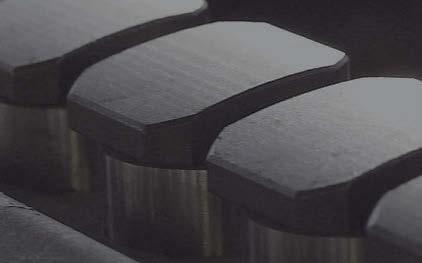

TENSIONERS & TIE-RODS FOR MARBLE AND GRANITE





CSC: caro-energia, inflazione record e rialzo dei tassi rallentano l’economia italiana a fine 2022
"L’industria ha continuato a reggere in termini di produzione, a fronte di costi altissimi, con ampia eterogeneità tra settori, ma la situazione tesa sui margini non giova agli investimenti". A scriverlo è il Centro Studi CONFINDUSTRIA nell'analisi "Congiuntura Flash" di novembre 2022, dove si sottolinea come fino al 3° trimestre dell'anno l’economia italiana abbia resistito al caro-energia ben oltre le aspettative: in aggregato, il PIL è cresciuto (+3,9% il dato “acquisito” per il 2022 fino a settembre, +0,5% in estate), grazie soprattutto al driver del turismo in espansione. A favorire la tenuta del tessuto produttivo nazionale sono state anche la lieve flessione dei prezzi delle commodity non energetiche e gli interventi del Governo per compensare, almeno in parte, i rincari energetici. "Ma nel 4° trimestre si rischia un calo: gli indicatori qualitativi sono nel complesso negativi; il prezzo del gas resta alto, da troppi mesi; l’inflazione che ne deriva (+11,8% annuo) erode reddito e risparmio delle famiglie e avrà un impatto negativo sui consumi; il rialzo dei tassi si sta accentuando, un’altra zavorra sui costi delle Imprese", commenta il CSC. Il prezzo del gas in Europa è infatti risalito rapidamente a novembre (89 euro/mwh in media), dopo la
CSC: costly energy, record inflation and rate hikes slow the Italian economy in late 2022
“Industry has continued to hold steady in production terms in spite of extremely high costs, with broad heterogeneity among sectors, but the tense situation on margins does not help investments”. So wrote the CONFINDUSTRIA Studies Center (CSC) in its November 2022 “Economic Situation Flash”, where it emphasized how until the third quarter of the year the Italian economy resisted energy price hikes well beyond expectations: as a whole, GDP grew (+3.9% the “acquired” figure for 2022 until September, +0.5% in the summer), thanks above all to the driver of expanding tourism. Helping the Italian production system to hold steady were also the slight decline in non-energy commodity prices and government interventions to compensate, at least in part, for costlier energy. “But in the fourth quarter there is the risk of a downturn: qualitative indicators are negative on the whole; gas prices remain high, for too many months: the inflation deriving from this (+11.8% annually) erodes household income and savings and will have a negative impact on purchasing; the rate hikes are accentuating, another weight on business costs”, the CSC comments. The price of gas in Europe in fact rose rapidly in

netta flessione dai picchi registrata ad ottobre. Anche il petrolio resta caro, ma sotto i massimi di alcuni mesi fa, continuando ad oscillare da settembre intorno ai 90 dollari al barile (dai 123 di giugno). Il rialzo dei tassi della Bce costituisce un'altra criticità, e rischia di "peggiorare lo scenario, almeno nel breve periodo". Il CSC nota infatti come il tasso sui Btp abbia già iniziato a trasferirsi sui tassi pagati dalle Imprese italiane, che fino a settembre sono aumentati di quasi un punto e sembrano destinati a salire ulteriormente. Nella misura in cui l’esigenza di liquidità provocata dal caro-energia conduce a debito addizionale, ciò avviene pertanto a tassi crescenti sulle nuove operazioni: "l’onere del debito, dunque, cresce due volte", e "tutto ciò assottiglia le risorse delle Imprese disponibili per realizzare investimenti e lo fa in uno scenario che aveva già virato in direzione recessiva". Concentrandoci sulla performance della produzione industriale, questa ha mostrato una flessione dell'1,8% a settembre, ma nella media del 3° trimestre è scesa di pochi decimali (-0,4%): tale dato, letto insieme al rapido aumento delle scorte a partire da aprile, "suggerisce che alcune Imprese hanno anticipato la produzione, prima dell’aumento dei prezzi energetici effettivamente pagati (alla scadenza dei contratti pre-crisi). Questo potrebbe preludere a una caduta marcata nei prossimi mesi", come sembra presagire anche il peggioramento degli indicatori qualitativi relativi agli ordini e alla fiducia delle Imprese. Dopo ben 6 trimestri consecutivi in forte espansione, si registra invece la frenata delle costruzioni: la produzione del settore è cresciuta poco a settembre (+0,2%) e nella media del 3° trimestre fa segnare un calo del 2,2%. Segnali misti invece per i servizi nel 4° trimestre dopo il rimbalzo in estate, grazie al recupero del turismo (che da agosto è finalmente risalito sopra i valori pre-Covid): a ottobre il Pmi servizi è sceso (46,4 da 48,8), mentre a novembre la fiducia dei consumatori ha recuperato terreno. Sul fronte dell'export l'analisi del CSC evidenzia come a settembre l’export sia tornato a crescere, grazie principalmente alle vendite extra-UE. "Nella media del 3° trimestre la dinamica è stata robusta (+2,7% in valore), ma anche per l’aumento dei prezzi (+1,1% in volume)". L’espansione delle vendite italiane sui mercati esteri è trainata dal mercato USA, anche grazie all’euro debole, mentre si mantengonosu bassi livelli le esportazioni verso Cina e Giappone e si sono contratte di circa un terzo quelle in Russia. "In prospettiva peserà la debolezza della domanda estera, specie in Europa, a causa di incertezza e inflazione. Il commercio mondiale si conferma in crescita, seppur a ritmo calante, a fronte di indicazioni qualitative negative da mesi". November (89 euros/mwh on average), after a net drop from the peaks registered in October. Oil is still costly, too, but below the peaks, continuing to oscillate from September at $US 90 per barrel (from the $US 123 in June). The European Central Bank’s raise in rates is another critical factor and risks “worsening the scenario, at least in the short term”. The CSC notes how the interest rate on BTP (Italian long-term treasury bonds) has already begun to affect the financing rates paid by Italian companies, which until September increased by nearly 1% and seemed destined to increase. To the extent to which the need for liquidity provoked by costly energy leads to additional debt, this therefore comes with higher rates for new transactions: “the debt burden therefore becomes twofold” and “all of this lessens the resources businesses have available to make investments, doing so in a scenario already veering towards recession”. Concentrating on industrial output performance, this decreased by 1.8% in September, but on average for the third quarter it lost less (-0.4%): this fact, read together with a rapid increase in stocked goods beginning in April, “suggests that some companies anticipated production prior to the increase in energy prices effectively paid (at the expiration of pre-crisis contracts). This could lead to a marked drop in coming months” as seems foreseen also by the worsening of qualitative indicators regarding orders and corporate confidence. After 6 consecutive quarters in heavy expansion, there has been a brake on building: sector production grew little in September (+0.2$) and on average for the third quarter there was a downturn of 2.2%. There were mixed signals, instead, for the services sector in the fourth quarter, after a summer rebound thanks to recouped tourism (which from August was finally above pre-Covid levels): in October services SME lost ground (to 46.4 from 48.8) while in November consumer confidence recouped terrain. On the export front the CSC analysis highlights that in September exports returned to growth, thanks mainly to sales outside the EU. “On average in the third quarter the dynamic was robust (+2.7% in value) but also due to price increases (+1.1% in volume)”. The expansion of Italian sales on foreign markets was driven by the US market, also thanks to a weak euro, while exports to China and Japan remained low and dropped by about a third to Russia. “The prospect is for weak foreign demand, especially in Europe, due to uncertainties and inflation, Global trade is increasing, although slowly, despite qualitative indications that have been negative for months”.
Regno Unito: gli effetti della Brexit aggravano la crisi
La Brexit continua ad avere effetti negativi sull’economia britannica, con ricadute sulla produttività e sul commercio con l'estero che aggravano l'attuale crisi in corso nel Regno Unito: è l’analisi fatta dai vertici della Bank of England in una recente audizione di fronte alla commissione Tesoro della Camera dei Comuni. Secondo il governatore della banca centrale inglese, infatti, ci sarà un rallentamento a lungo termine della produttività, un calo stimato in circa il 3%. Vengono quindi confermate le previsioni pubblicate subito dopo il referendum sul divorzio britannico dall'Ue del 2016. A sei anni di distanza dalla Brexit, e quasi due anni dopo la sua effettiva entrata in vigore, si avvertono le conseguenze dell'addio all'Unione anche sul commercio estero a cui si sono aggiunti altri fattori con effetti negativi, come la pandemia da Covid e l'impennata dei prezzi dell'energia causata dalla guerra in Ucraina. "Stiamo assistendo a un rallentamento degli scambi commerciali nel Regno Unito molto più rapidamente che nel resto del mondo" - ha dichiarato Swati Dhingra, membro del Monetary Policy Committee (Mpc) della BoE. L'esperta in commercio internazionale ritiene infatti che il referendum sulla Brexit abbia "contribuito ad un aumento dei prezzi e a una riduzione del reddito" per i britannici: i salari reali, a suo avviso, sono inferiori del 2,6% rispetto a quanto sarebbero stati seguendo il trend precedente al voto di giugno 2016. L'audizione della Bank of England è avvenuta alla vigilia della presentazione da parte del nuovo governo Tory di Rishi Sunak di una finanziaria d'autunno all'insegna di aumenti fiscali e tagli alla spesa pubblica, varati nel tentativo di ridare stabilità all'economia del Regno Unito.
United Kingdom: the effects of Brexit aggravate the crisis
Brexit continues to have negative effects on the British economy, with fallout on productivity and foreign trade that aggravates the current crisis in the United Kingdom: this is the analysis made by heads of the Bank of England in a recent hearing with the Treasury Commission of the House of Commons. In fact, according to the governor of the British central bank, there will be a long-term slowdown in productivity, a downturn estimated at about 3%. This confirms the predictions published immediately after the referendum on Britain’s withdrawal from the European Union in 2016. Six years on from the Brexit decision, and nearly two years after it effectively took place, the consequences of Britain’s divorce from the Union on foreign trade are being felt, along with other factors having negative effects such as the Covid-19 pandemic and the energy price hikes caused by the war in Ukraine. “We are witnessing a slowdown in the United Kingdom’s trade that is much faster than in the rest of the world”, declared Swati Dhingra, member of the Bank of England’s Monetary Policy Committee. In fact, this foreign trade expert believes that the Brexit referendum has “contributed to an increase in prices and reduction in income” for the British people: in his opinion, real salaries are 2.6% less than they would have been following the trend prior to the June 2026 vote. The Bank of England hearing was held on the eve of Rishi Sunak’s new Tory government’s presentation of an autumn finance law containing tax increases and public spending cuts, launched in an attempt to restore stability to the United Kingdom’s economy.

Imprese a UE: servono subito misure rivoluzionarie sull'energia
"Misure emergenziali rivoluzionarie sull’energia e politiche efficaci mirate a rafforzare la competitività, la crescita e l’occupazione". Questi i principali obiettivi della dichiarazione finale firmata il 25 novembre a Stoccolma dai Presidenti delle 40 Associazioni nazionali che fanno parte di BusinessEurope in occasione del Consiglio di Presidenza della principale federazione dell’industria a livello europeo. Le Imprese esortano così l’Europa a focalizzare urgentemente la propria azione sull’attuale crisi energetica, che sta seriamente aggravando il rischio di una deindustrializzazione nel Continente. Secondo gli Imprenditori, in prima battuta, serve evitare che forze divisive ed individualismi minino la solidarietà, uno dei valori fondanti dell’UE. Nel corso del sumnmit di BusinessEurope sono state presentate al Primo Ministro svedese, Ulf Kristersson e al Ministro degli Affari Europei, Jessika Rosswall, le priorità che dovranno essere in cima all’agenda politica della futura Presidenza dell’UE, che a breve sarà assunta dalla Svezia. Inoltre, insieme al Commissario Thierry Breton, i rappresentanti delle Imprese europee hanno svolto alcune riflessioni sulla necessità di sostenere l’industria durante la crisi energetica salvaguardando, al contempo, il Mercato Unico. Su impulso di CONFINDUSTRIA, nella dichiarazione finale è stato inserito anche un riferimento esplicito alla direttiva sugli imballaggi, che pregiudica il riciclo e i prodotti sostenibili su cui le imprese hanno investito miliardi di euro e rischia di scardinare i modelli di economia circolare virtuosi, come ad esempio quello italiano, che rappresenta un’eccellenza da valorizzare.
Enterprise to the EU: we need revolutionary energy measures immediately
“Emergency and revolutionary energy measures and efficacious policies aimed at strengthening competitiveness, growth and jobs”. This are the principal goals of the final declaration signed on November 25 in Stockholm by the presidents of the 40 national associations belonging to BusinessEurope during the summit meeting of the main business federation Europe-wide. Businesses urge Europe to urgently focus its work on the current energy crisis, which is seriously aggravating the risk of the Continent’s de-industrialization. According to businesspeople, the first thing to do is to prevent divisive forces and individualisms from undermining solidarity, one of the founding values of the European Union. During the BusinessEurope summit meeting, the Swedish Prime Minister, Ulf Kristersson and the European Affairs Minister, Jessika Rosswall, presented the priorities that must top the policy agenda of the future Presidency of the EU, which will soon be assumed by Sweden. Moreover, together with Commissioner Thierry Breton, the representatives of European businesses commented on the need to support industry during the energy crisis, at the same time protecting the Single Market. Pushed by CONFINDUSTRIA, the final declaration also included an explicit reference to the directive on packaging, which jeopardizes the recycling and sustainable products in which companies have invested billions of euros and risks unhinging virtuous circular economy models, for the example the Italian, that represent an excellence to be valorized.
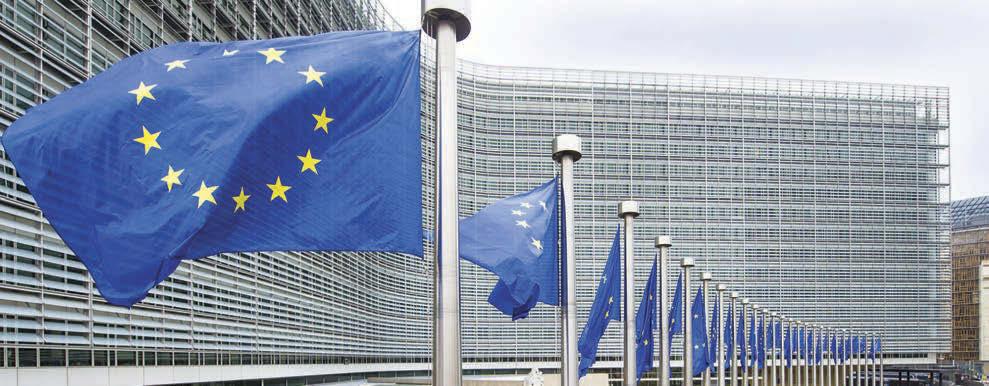
Lavoro: 344mila dipendenti privati in più nei primi 10 mesi del 2022
Secondo il Report di Bankitalia "Il mercato del lavoro: dati e analisi" da gennaio a ottobre del 2022 il numero di posizioni dipendenti nel settore privato non agricolo è aumentato, al netto dei fattori stagionali, di 344mila unità. Nel rapporto si sottolinea che a partire dall'estate la dinamica dell'occupazione si è indebolita rispetto alla prima metà dell'anno, soprattutto nel turismo, "ma si mantiene su ritmi di crescita in linea con quelli pre-pandemici": nel bimestre settembre-ottobre 2022 sono stati infatti creati 48mila posti di lavoro, a fronte dei circa 42mila del 2019. Dall’inizio dell'anno più del 90% delle attivazioni nette ha riguardato rapporti di lavoro a tempo indeterminato.
Dopo la fase più acuta della crisi pandemica, in Italia è tornata a crescere la produttività del capitale, ossia il rapporto tra valore aggiunto e input di capitale, che definisce l'efficienza con cui quest'ultimo viene impiegato nel processo produttivo. Lo rileva l'Istat, precisando che la produttività nel 2021 è aumentata del 7,7% dopo il -10,7% del 2020, in virtù del forte aumento del valore aggiunto dei settori produttori di beni e servizi (+8,5%, contro il -11% dell'anno precedente) e dell'incremento più contenuto dell'input di capitale (+0,8%). Anche la produttività dei fattori di produzione risulta in crescita, ad eccezione di quella del lavoro (valore aggiunto per ora lavorata), diminuita dello 0,7%.



Jobs: in the first 10 months of 2022, private sector employees grew by 344,000
According to the BankItalia Report, “The Job Market: Data and Analysis”, from January to October 2022 the number of employees in the non-agricultural private sector increased, excluding seasonal factors, by 344,000. The report emphasizes that starting from the summer, the employment dynamic weakened compared to the first half of the year, especially in tourism, “but remained at growth rates in line with the pre-pandemic”: in September-October 2022, in fact, 48,000 jobs were created, compared to about 42,000 in 2019. From the start of 2022 more than 90% of the new hires were for unlimited-time contracts.
In Italy capital productivity returns to growth
After the acutest stage of the pandemic in Italy, growing again is capital productivity, the ratio between added value and capital input that defines the efficiency with which the latter is used in the production process. ISTAT announced this, specifying that in 2021 productivity increased by 7.7% after the loss of 10.7% in 2020, thanks to the heavy increase in added value in sectors producing goods and services (+8.5% vs the -11% of the previous year) and the smaller increase in capiral input (+0.8%). The productivity of production factors is also increasing, except that of labor (added value per work hour), which lessened by 0.7%.

Approvata la nuova Direttiva UE sulla comunicazione societaria di sostenibilità
Il 10 novembre il Parlamento Europeo ha adottato in via definitiva la direttiva sulla comunicazione societaria sulla sostenibilità (CSRD, Corporate Sustainability Reporting Directive). Le nuove norme obbligheranno le Imprese dell'UE a rendere pubblici i dati sul loro impatto sull’ambiente, sulle persone, sul pianeta e sui rischi di sostenibilità a cui sono esposte. La raccolta e la condivisione di informazioni sulla sostenibilità diventeranno così la regola per quasi 50mila aziende nell'UE, rispetto alle circa 11.700 coperte dall'attuale normativa. I nuovi obblighi UE di trasparenza sulla sostenibilità si applicheranno a tutte le grandi Imprese, quotate in borsa o meno, comprese le Imprese estere che fatturano più di 150 mln di euro nell'UE. Le PMI quotate in borsa saranno coperte, ma avranno più tempo per adattarsi alle nuove regole. La direttavia prevede infatti differenti fasi di applicazione: •dal 1° gennaio 2024 per le grandi Imprese di interesse pubblico (con più di 500 dipendenti) già soggette alla direttiva sulla dichiarazione non finanziaria, con scadenza della pubblicazione dei dati nel 2025; •dal 1° gennaio 2025 per le grandi Imprese non ancora soggette alla direttiva sulla dichiarazione non finanziaria (con più di 250 dipendenti e/o 40 mlni di euro di fatturato e/o 20 mln di attività totali), con scadenza nel 2026; •dal 1° gennaio 2026 per le PMI e le altre Imprese quotate, con scadenza nel 2027. Le PMI possono scegliere di non partecipare fino al 2028; Entro la fine del 2022 dovrebbero essere pubblicate le bozze di standard generali redatti dall' EFRAG (il Gruppo consultivo europeo sull'informativa finanziaria) per il reporting di sostenibilità, cui seguirà, nella seconda metà del 2023, la pubblicazione degli standard settoriali e degli standard ad hoc per le PMI.
The new EU Directive on corporate sustainability communication approved
On November 10 the European Parliament definitively adopted the Corporate Sustainability Reporting Directive (CSRD). The new regulations will oblige EU businesses to make public data on their impact on the environment, on people, on the planet and on the sustainability risks to which they are exposed. Gathering and sharing information on sustainability will thus become the rule for nearly 50,000 companies in the EU, compared to the 11,700-odd covered by the current regulations. The new EU obligations for sustainability transparency will be applied to all the big companies, whether listed or not, including the foreign companies that bill more than 150 million euros in the European Union. The SME quoted on the stock exchange will be included but will have more time to adapt to the new regulations. In fact, the directive foresees different application stages: •From January1, 2024, for large public interest companies (with more than 500 employees) already subject to the directive on non-financial declarations, with a 2025 data publication due date; •From January 1, 2025, for large companies not yet subject to the directive on non-financial declarations (with more than 250 employees and/or 40 million euros in revenue and/or 20 million in total work), with a 2026 due date; •From January 1, 2026, for SME and other listed companies, with a 2027 due date. The SME can opt not to participate until 2028. By the end of 2022 drafts of general standards written by EFRAG (European Financial Reporting Advisory Group) for sustainability reporting should be published, followed, in the second half of 2023, by publications of sector standards and ad hoc standards for SME.
Percorso formativo CONFINDUSTRIA-ICE su commercio estero e compliance doganale
CONFINDUSTRIA e ICE-Agenzia anche per il 2022 hanno attivato un interessante progetto - denominato “La doppia elica del commercio mondiale: dogana e mercati” e che ha fatto seguito alle iniziative degli anni precedenti - dedicato alla formazione tecnicospecialistica nel campo del commercio internazionale e delle dogane, volto a sostenere e facilitare l'attività delle Imprese che operano sui mercati esteri. Sempre di più gli aspetti connessi alla trade compliance che vanno oltre l’export control stanno infatti influenzando il commercio internazionale e gli aspetti classici delle procedure in essere devono così essere riletti alla luce dei termini e delle condizioni che disciplinano gli scambi fra due o più Paesi. Obiettivo di questo percorso formativo è stato pertanto quello di contribuire a rafforzare le competenze tecniche necessarie per operare sui mercati internazionali, sensibilizzando le Aziende su temi sempre più importanti e complessi, nello specifico creando una adeguata attenzione sulle opportunità connesse ad un approccio trade compliant. Il progetto formativo - a partecipazione gratuita per le Imprese del sistema Confindustriale, comprese quindi anche le Associate a CONFINDUSTRIA MARMOMACCHINE - si è articolato in un ciclo di 4 appuntamenti esclusivamente in modalità online della durata di mezza giornata, suddivisi in 2 moduli ciascuno, realizzati tra ottobre e dicembre 2022. La docenza è stata affidata a specialisti della materia componenti del Gruppo di Lavoro “Dogane e Commercio Internazionale” di CONFINDUSTRIA e gli incontri hanno visto inoltre la partecipazione dell’Agenzia delle Dogane e dei Monopoli e di ospiti esterni.
CONFINDUSTRIA-ICE training course on foreign trade and customs compliance
In 2022 CONFINDUSTRIA and ICE-Agency put in place another interesting project denominated “The double propeller of world trade: customs and markets”, which followed the lead of the projects in previous years devoted to technical-specialistic training in the field of international trade and customs, aimed at facilitating the work of companies operating on foreign markets. In project presentation it was emphasized how more and more aspects connected to trade compliance that go beyond export control are influencing international trade and that the classic aspects of existent procedures must thus be viewed from the standpoint of the terms and conditions that discipline trade between two or more countries. The purpose of this training course was therefore to help reinforce the technical skills needed to operate on international markets, sensitizing companies to increasingly important and complex issues, and in this specific case focusing suitable attention on the opportunities connected with a trade compliant approach. The training course - free of charge for companies, including those belonging to CONFINDUSTRIA MARMOMACCHINE - consisted of a cycle of 4 online, half-day sessions divided into 2 modules each, held between October and December 2022. It was given by specialists in the subject belonging to the CONFINDUSTRIA “Customs and International Trade” Work Group and also featured participation by the Italian Customs and Monopolies Agency and external guests.

Area collettiva italiana a STONE & SURFACE SAUDI ARABIA 2023
ICE-Agenzia e CONFINDUSTRIA MARMOMACCHINE organizzerano la partecipazione collettiva delle Aziende italiane del settore lapideo e tecno-marmifero alla fiera STONE & SURFACE SAUDI ARABIA 2023 - il principale evento nel Paese mediorientale dedicato ai rivestimenti/superfici da interno ed esterno - in programma a Riyadh dal 18 al 21 febbraio. Nella passata edizione la manifestazione ha visto la partecipazione di oltre 450 espositori da 35 Paesi e circa 22.000 visitatori. A livello statsistico si segnala che nei primi 8 mesi del 2022 l’Arabia Saudita è stato il 5° buyer di prodotti lapidei lavorati e semilavorati italiani con acquisti per oltre 42 mln di euro, in aumento del 37% rispetto allo stesso periodo del 2021.
Commercio estero: a ottobre +20,1% l'export extra UE

A ottobre 2022 l'Istat ha rilevato per l'interscambio commerciale dell'Italia con i Paesi extra Ue27 una diminuzione congiunturale per entrambi i flussi, più ampia per le importazioni (-8,7%) rispetto alle esportazioni (-4,3%). Nonostante questo rallentamento, nei primi 10 mesi dell'anno l'export si è mantenuto a +20,1% rispetto allo stesso periodo del 2021, mentre l'import ha registrato una crescita del 62,9%, principalmente di l'energia (+162,5%). Rispetto a ottobre dell'anno precedente si è rilevato un aumento delle vendite verso quasi tutti i principali partner extra Ue27: i più ampi riguardano Turchia (+47,7%), Stati Uniti (+34,2%) e area OPEC (+32%), mentre prosegue la flessione delle esportazioni verso la Russia (-30,9%).

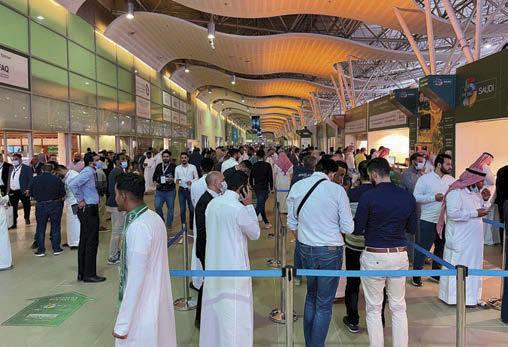
Collective Italian exhibit at STONE & SURFACE SAUDI ARABIA 2023
ICE-Agency and CONFINDUSTRIA MARMOMACCHNE will be organizing the collective participation of Italian stone and techno/stone companies at the 2023 STONE & SURFACE SAUDI ARABIA show - the main event in the Gulf country devoted to interior and exterior coverings/surfaces - scheduled in Riyadh from February 18 to 21. In the previous edition the event had more than 450 exhibitors from 35 countries and some 22,000 visitors. On the statistical level, we mention that in the first 8 months of 2022 Saudi Arabia was the fifth-ranking buyer of finished and semi-finished Italian stone products, with purchases worth more than 42 million euros, an increase of 37% from the same period in 2021.
Foreign trade: non-EU exports up 20.1% in October
In October 2022 ISTAT announced that Italy’s foreign trade with countries outside the EU27 had lessened, decreasing more for imports (-8.7%) than for exports (-4.3%). Despite this slowdown, from January to October exports held steady at 20% more than in the same period in 2021, while imports grew by 62.9%, mainly for energy (+162,5%). Compared to October 2021, there was an increase in sales to all of Italy’s main partners outside the EU27: the biggest gains were in Turkey (+47.7%), the United States (+34.2%) and the Gulf area (+32%), while the drop in exports to Russia continued (-30.9%).
Lombardia: +3,9% l'aumento del Pil nel 2022, recuperati i livelli pre-pandemia
Secondo i dati diffusi dal Centro Studi di Assolombarda per il 2022 è attesa per la Lombardia una crescita dell'economia del +3,9% rispetto all'anno precedente, un dato superiore alla media italiana (+3,4%) che consentirà alla regione di colmare pienamente la perdita di Pil accusata nel 2020, attestandosi a +1,8% rispetto al 2019. Con particolare riferimento ai suoi comparti, l'industria regionale non chiuderà, per poco, il divario con il 2019 (-0,2% il valore aggiunto), risentendo del rincaro degli input produttivi e del rallentamento internazionale, così come l'agricoltura (-2,4%). Al contrario, il settore che registrerà la performance migliore sarà quello delle costruzioni (+30,1% sul 2019).
Area Marmo Italia al SURFACE DESIGN SHOW 2023 di Londra

Dal 7 al 9 febbraio è in programma a Londra l'edizione 2023 di SURFACE DESIGN SHOW, il principale evento fieristico inglese dedicato ai rivestimenti/superfici da interno ed esterno. ICEAgenzia e CONFINDUSTRIA MARMOMACCHINE anche quest'anno coordineranno la partecipazione collettiva delle Aziende italiane del settore lapideo alla fiera londinese, che rappresenta una piattaforma ideale per la presentazione di nuovi materiali, soluzioni di design e innovazioni di prodotto a un pubblico selezionato di architetti e designer di interni. Ricordiamo che il Regno Unito rappresenta attualmente il 6° mercato di destinazione per marmi e graniti lavorati italiani, con circa 39 mln di euro di import nel solo periodo gennaio-agosto 2022.


Lombardy: GDP up 3.9% in 2022, returning to pre-pandemic levels
According to data issued by the Assolombarda (Lombardy Business Association) Studies Center, in 2022 Lombardy is expected to have economic growth of 3.9% from the previous year, a figure above the Italian average (3.4%) that will enable the region to fully recoup its GDP loss in 2020, stabilizing at +1.8% from 2029. With detailed references to its various sectors, the region’s industries will just miss closing the gap with 2019 (-0.2% added value) due to higher costs of production input and the slowdown internationally, and the same holds for agriculture (-2.4%). On the other hand, the sector with the best performance will be the building industry (+30-1% from 2019).
Italian stone area at the 2023 SURFACE DESIGN SHOW in London
February 7 to 9 are the dates in London for the 2023 edition of the SURFACE DESIGN SHOW, the main English event for interior and exterior coverings/surfaces. This year, too, ICE-Agency and CONFINDUSTRIA MARMOMACCHINE will coordinate the collective participation of Italian stone companies at the London show, an ideal showcase for presenting new materials, design concepts and innovative products to a select public of arìchitects and interior designers. We remind readers that the United Kingdom is currently the sixth-ranking market for finished Italian marble and granite products, with imports worth around 39 million euros in just the first 8 months of 2022.
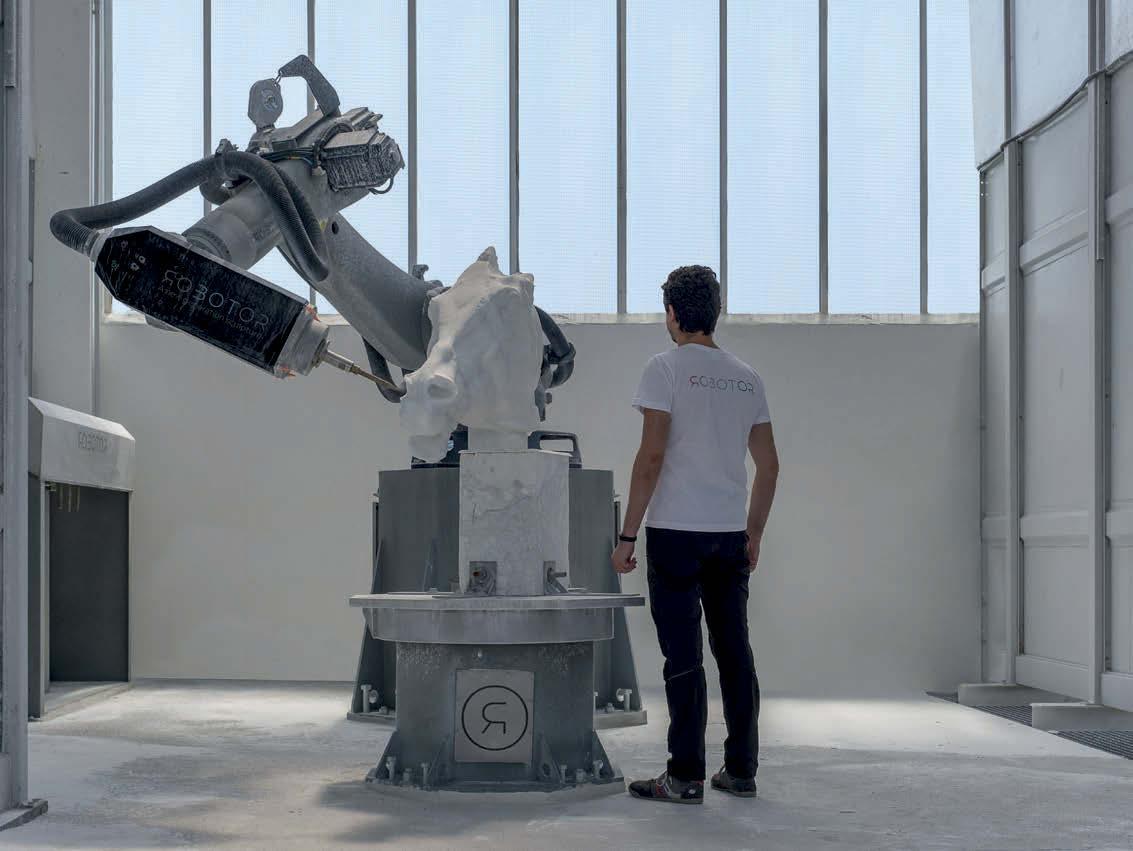

Costo del credito per le Imprese, +2,3 mld in un anno
In una recente nota il CSC ha analizzato come l’onda lunga del rialzo dei tassi stia colpendo anche il costo del credito per le Imprese. La FED a novembre ha alzato il tasso ufficiale negli USA al 4%, ben oltre il valore “neutrale” stimato al 2,5% per abbassare l’inflazione. La BCE sta seguendo il rialzo FED, con un ritardo di alcuni mesi ma un ritmo analogo (2% a ottobre, appena sotto il valore neutrale di 2,1%). Il rendimento del BTP italiano ha riflesso i rialzi a livello internazionale, arrivando al 4,18% a novembre da 0,97% a fine 2021. Questo rialzo ha già iniziato a trasferirsi sui tassi pagati dalle Imprese, che fino a settembre sono aumentati da 1,74% a 2,59%, col costo del credito che è aumentato di 2,3 mld di euro in un anno.
Oman, progetto per un Trump Golf Resort a Muscat

La società immobiliare saudita Dar al-Arkan ha recentemente annunciato di aver firmato un accordo con la Trump Organization per sviluppare un Trump Golf Resort del valore di 4 mld di dollari a Muscat, nel Sultanato dell'Oman. Il progetto, denominato AIDA, sarà realizzato in joint-venture con l'Omran Group, braccio operativo della Oman Tourism Development Company, e prevede la realizzazione di 3.500 unità residenziali indipendenti, un hotel da 450 stanze, spazi commerciali e un campo da golf, interessando una superficie complessiva di 3,5 mln di mq sulle colline con vista mare vicino alla capitale omanita. Lo sviluppo del progetto inizierà nel 2023 e si prevede che occorreranno circa dieci anni per il suo completamento.
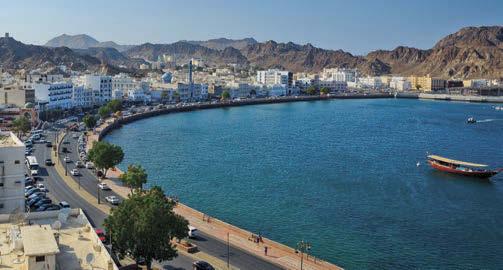

Credit costs for companies up 2.3 billion in a year
In a recent communiqué the CSC analyzed how the long wave of interest rate increases is also hitting the cost of credit for companies. In November in the US the Fed raised the official interest rate to 4%, well above the “neutral” amount estimated as 2.5%, to lower inflation. The European Central Bank is following in the Fed’s footsteps (2% in October, just below the neutral amount of 2.5%). The yield of Italian government bonds (BTP) reflects the international increases, rising to 4.18% in November from 0.97% at the end of 2021. This increase is now being transferred to the interest rates businesses pay, which as of September had risen from 1.74% to 2.59%, with the cost of loans increasing by 2.3 billion euros in a year.
Oman, project for a Trump Golf Resort in Muscat
The Saudi realty company Dar al-Arkan recently announced that it had signed an agreement with the Trump Organization to build a Trump Golf Resort worth $US 4 billion in Muscat, in the Sultanate of Oman. The project, called AIDA, will be a joint venture with the Omran Group, the operational branch of the Oman Tourism Development Company, and foresees the building of 3,500 independent residential units, a 450-room hotel, commercial spaces and a golf course, the whole covering 3.5 million square meters on the hillsides overlooking the sea near the Omani capital. Project development will begin in 2023 and is expected to take about ten years to complete.













Si conferma la crescita dell'export lapideo brasiliano, +8,4% nei primi 9 mesi del 2022
Il 2022 si sta dimostrando un anno estremamente positivo per l'industria lapidea del Brasile. Secondo i dati diffusi dall'associazione settoriale Centrorochas il valore delle esportazioni brasiliane di marmi, graniti e pietre naturali in genere nei primi 9 mesi dell'anno è infatti aumentato dell'8,4% rispetto allo stesso periodo del 2021, raggiungendo i 1.012 mln di USD. Ricordiamo che il 2021 si era chiuso con un ottimo +35,5% per l'export settoriale del Paese sudamericano (per un totale di 1.338 mln), dopo che il 2020 aveva fatto registrare una flessione del 2,7%. Guardando alla serie storica relativa al periodo gennaio settembre, il dato del 2022 rappresenta un record per le esportazioni lapidee verde-oro, che per la prima volta hanno superato la soglia del miliardo di USD. A livello merceologico circa il 65% delle vendite brasiliane è costituito da lavorati e semilavorati di granito e quarzite (per complessivi 666,8 mln, in aumento del 6% sul 2021), seguito dai blocchi degli stessi materiali col 20,5% (206,9 mln, +18,2%). Il buon momento dell'industria lapidea del Brasile si sta riflettendo anche nella forte crescita degli investimenti tecnologici. Nei primi 7 mesi del 2022 ha infatti fatto segnare una forte crescita anche l' import dall’Italia di macchine, attrezzature, impianti e consumabili per l’estrazione e la lavorazione delle pietre naturali, che sono aumentate del 46,6% rispetto allo stesso periodo del 2021 raggiungendo i 24,9 mln di euro (dati Centro Studi CONFINDUSTRIA MARMOMACCHINE), valore che colloca il Paese sudamericano al 9° posto nella classifica dei mercati di destinazione di tecnologie lapidee Made in Italy.
Growth in Brazil’s stone exports confirmed: +8.4% in the first 9 months of 2022
2022 is proving to be an extremely positive year for the Brazilian stone sector. According to data issued by Centrorochas, the country’s stone sector association, the worth of Brazil’s exports of marbles, granites and natural stones in general in the first three quarters of 2022 in fact increased by 8.4% from the same period in 2021, reaching $US 1.012 million. We remind readers that 2021 had ended with an excellent 35.5% uptake in Brazil’s stone exports (for a total of $US 1.338 million) after a 2.7% downturn in 2020. Comparing past trends for the January to September period, the one for 2022 sets a record for Brazilian stone exports, which for the first time surpassed the $US 1 billion mark. On the commodity level, 65% of Brazil’s foreign sales were of finished and semi-finished products in granite and quartzite (for a total of 666.8 million, up 6% from 2021) followed by blocks of the same materials with 20.5% (206.9 million, up 18.2%). This upward trend in the Brazilian stone industry is also reflected in a heavy increase in technological investments. In the first 7 months of the year, in fact, there was strong growth in imports of Italian machines, equipment, installations and consumables for extracting and processing natural stones, which increased by 46.6% from the same period in 2021, reaching 24.9 million euros (data from the CONFINDUSTRIA MARMOMACCHINE Studies Center), an amount that puts the South American country in ninth place among destination markets for stone technologies Made in Italy.

Accordi per l’innovazione, oltre 500 mln per le Imprese
Il Ministero delle Imprese e del Made in Italy ha sbloccato 500 mln di euro, a valere sul Fondo nazionale complementare al PNRR, per finanziare progetti di ricerca e sviluppo nell’ambito del secondo sportello dedicato agli Accordi per l’innovazione, la cui apertura è prevista il 31 gennaio 2023. Potranno beneficiare delle agevolazioni le Imprese di qualsiasi dimensione, anche in forma congiunta, che esercitano attività industriali, agroindustriali, artigiane o di servizi all’industria nonché attività di ricerca. A partire dal 17 gennaio 2023, nel sito internet di Mediocredito Centrale (Soggetto attuatore), sarà possibile procedere con la compilazione guidata della domanda di agevolazione e della ulteriore documentazione.
Tanzania: un nuovo aeroporto per la capitale Dodoma

Il governo della Tanzania ha recentemente annunciato l'avvio dei lavori del nuovo aeroporto internazionale di Msalato, progettato per facilitare il trasferimento delle funzioni amministrative dalla capitale commerciale Dar es Salaam alla capitale amministrativa Dodoma, che dista solo 14 km dal nuovo scalo. La realizzazione di quest'opera - che si svilupperà su un'area di 45 kmq - mira a infatti a migliorare la connettività dei trasporti di quest'area del Paese africano, con una capacità annua prevista di circa 50mila aeromobili e oltre un milione di passeggeri. Si stima che il progetto costerà 330 mln di USD ed è cofinanziato da African Development Bank, Africa Growing Together Fund e dal governo della Tanzania.


Agreements for innovation, more than 500 million euros for businesses
The Ministry of Business and the Made in Italy has released 500 million euros from the national fund complementary to the National Recovery and Resilience Plan (PNRR) to finance research and development projects in the context of the Agreements for Innovation Desk, expected to open on January 31, 2023. Eligible for the facilitations are business of whatever size, even jointly, that engage in industrial, agro-industrial, artisanal businesses or in services to industry, as well in in research. Starting on January 17, 2023, on the Mediocredit Centrale website it will be possible to proceed with guided compilations of applications forms for facilitations and ulterior documentation.
Tanzania: a new airport for Dodoma, the capital
The Tanzanian government recently announced the start of work on Msalato, the new international airport designed to ease the transfer of administrative work from the commercial capital, Dar es Salaam, to the administrative capital, Dodoma, which is only 14 km from the new airport. Building the airport - to cover an area of 45 square kilometers - in fact is aimed at improving transport connections to and from this area of the African country, with a predicted annual capacity of about 50,000 flights and a million passengers. It is estimated that the project will cost $US 330 million and is jointly financed by the African Development Bank, the Africa Growing Together Fund and the Tanzanian government.
PMI Day 2022: l'appuntamento annuale tra giovani e Imprese. Il Made in Italy protagonista di questa edizione
Si è svolta lo scorso 18 novembre la Giornata Nazionale delle Piccole e Medie Imprese, organizzata da Piccola Industria CONFINDUSTRIA insieme alle associazioni del Sistema, che ha proposto un ricco programma di iniziative in simultanea in tutte le regioni italiane. Giunta alla tredicesima edizione, il PMI Day ha visto il coinvolgimento di oltre 1000 Imprese, 600 scuole medie e superiori e circa 48mila partecipanti. Il successo dell'iniziativa testimonia il grande interesse da parte degli Imprenditori ad avvicinare i giovani al mondo dell’Impresa, attraverso incontri e visite guidate nelle Aziende. Oltre agli studenti, la manifestazione ha coinvolto anche i loro insegnanti, le famiglie, le istituzioni locali e la stampa, per avviare momenti di confronto volti a raccontare l’impresa e il suo ruolo di attore sociale sul territorio. Dal 2010, anno di nascita della manifestazione, le PMI di CONFINDUSTRIA hanno aperto le loro porte complessivamente ad oltre 472mila ragazzi che hanno avuto la possibilità di vedere da vicino i processi produttivi delle Imprese, molte delle quali
PMI (SME) Day 2022: the annual event for young people and businesses. The Made in Italy the star of this edition
November 18 was Italy’s Small and Medium-sized Businesses Day, organized by Piccola Industria (Small Businesses) CONFINDUSTRIA together with federation associations, which proposed a rich slate of simultaneous projects in all Italian regions. Now in its thirteenth edition PMI Day involved more than 1,000 companies, 600 middle and high schools and some 48.000 participants. The success of the event testifies to the great interest businesspeople have in introducing young people to their world through meetings and guided tours of companies. In addition to students, the event also included their teachers, families, local organizations and the press, to initiate discussions aimed at recounting businesses and their role as social actor in their territories. Since 2010, the first year if the event, CONFINDUSTRIA’s SME have opened their doors to a total of more than 472,000 young people, who had the chance to personally view the production processes of these
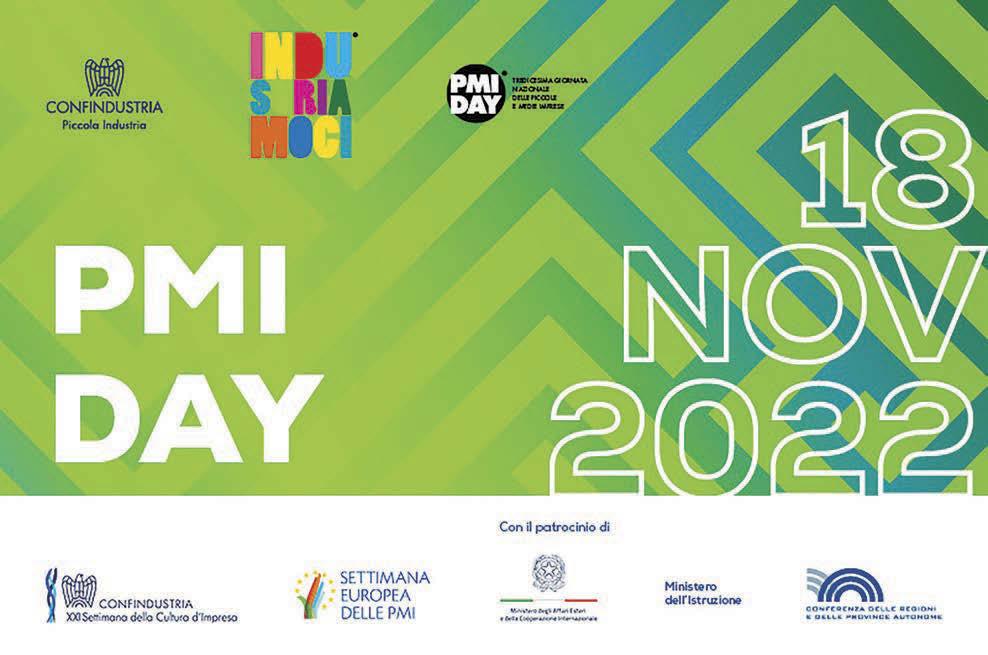
protagoniste del successo del Made in Italy. L’edizione 2022 ha avuto come focus la “bellezza del saper fare italiano”, un asset e un fattore competitivo che nasce dall’attitudine alla cura delle produzioni, esprime la capacità di innovazione e la creatività ed è anche un vero e proprio patrimonio di saperi e tradizioni ispirate dalla storia e dalla cultura delle comunità e dei territori di cui le PMI sono parte integrante. A partire dal 2021 la manifestazione ha ottenuto inoltre il patrocinio del Ministero dell’Istruzione e della Conferenza delle Regioni e delle Province Autonome, a conferma dell’importanza cruciale di informare e formare allo stesso tempo i giovani, aggiornare il corpo docente - con particolare attenzione alle scuole medie - orientare i ragazzi verso percorsi scolastici idonei a intraprendere nuove professioni e favorire un più ampio coinvolgimento delle istituzioni locali sul progetto. “Il PMI Day è una grande festa in cui gli imprenditori ascoltano i giovani. Un confronto in cui si disegna insieme il futuro”, ha affermato Giovanni Baroni, presidente Piccola Industria di CONFINDUSTRIA. “Un Imprenditore rimane studente per tutta la vita, con la propensione al cambiamento, l’entusiasmo, la curiosità e l’energia che contraddistinguono i ragazzi. Sono proprio questi i fattori chiave che ogni giorno portano sui mercati globali la bellezza del Made in Italy, il tema che abbiamo scelto come focus di questa giornata. Vogliamo raccontare ai ragazzi il valore economico e sociale delle nostre Imprese per le comunità e la bellezza delle nostre produzioni, perché fare impresa significa poter tracciare la propria strada. Per questo è importante che i giovani conoscano le realtà aziendali e inquadrino le nuove opportunità professionali, anche in modo da orientare il proprio percorso formativo”. L’iniziativa è stata inserita nella XXI Settimana della Cultura d’impresa organizzata da CONFINDUSTRIA e nella Settimana Europea delle PMI promossa dalla Commissione Europea. “PMI Day 2022 è un’edizione speciale, gli studenti tornano fisicamente dentro le Aziende. L’esperienza che deriva dall’ascoltare i racconti dalla voce di chi li vive è fondamentale per trasmettere ai giovani i valori più profondi della cultura d’impresa, per permettere loro di conoscere le figure professionali che vi operano e quelle che il mercato richiede”, ha commentato Claudia Sartirani, coordinatore nazionale del PMI Day Piccola Industria. “Scuola e Impresa sono due mondi che devono correre parallelamente ed alimentarsi reciprocamente, magari proprio attraverso la bellezza. Vogliamo raccontare agli studenti quanta ce n’è nel fare ricerca, produrre con qualità, innovare, fare formazione, nell’essere comunità che lavora su visioni condivise, che crede nei giovani”. companies, many of which are leaders in the success of the Made in Italy. The focus of the 2022 edition was “the beauty of Italian know-how”, an asset and competitive factor that stems from an aptitude to produce with care, expresses innovational ability and creativity and is also an authentic heritage of knowledge and traditions inspired by the history and culture of the communities and territories of which the SME are an integral part. Furthermore, since 2021 the event has been sponsored by the Ministry of Education and by the Conference of Regions and Autonomous Provinces, confirming the crucial importance of informing and at the same time training young people, updating the teaching body - with particular attention to middle schools -, orienting kids towards educational routes suited to undertaking new professions and fostering a broader involvement of local institutions in the project. “PMI Day is a big party at which businesspeople listen to young people. A meeting at which the future is designed together”, stated Giovanni Baroni, president of Small Businesses CONFINDUSTRIA. “A businessperson remains a student for all his/her life, with a propensity for change and the enthusiasm, curiosity and energy typical of the young. These are the key factors that daily take to global markets the beauty of the Made in Italy, the theme that we chose as the focus for this day. We want to tell kids about the economic and social value our businesses have for the community and about the beauty of our products, because doing business means being able to follow one’s own path. And so it is important that young people get to know companies and become aware of new job opportunities, also to help them orient their educations”. The event was part of the XXI Business Culture Week organized by CONFINDUSTRIA and of the European SME Week sponsored by the European Commission. “PMI Day 2022 is a special edition, with students again visiting companies in person. The experience deriving from listening to the stories of those living them is fundamental for transmitting to young people the deepest values of business culture to enable them to learn about the professional figures they employ and what the market demands”, commented Claudia Sartirani, national coordinator of PMI Day Small Businesses. “School and business are two worlds that must exist in parallel and reciprocally, perhaps exactly through beauty. We want to tell students how valuable it is to do research, produce with quality, innovate, educate, be a community that works with shared visions, that believes in young people”.
Turchia: +2,6% le esportazioni di pietre naturali nei primi 9 mesi del 2022
Secondo le statistiche diffuse dall'Ufficio ICE-Agenzia di Istanbul su dati Turkstat, le esportazioni turche di pietre naturali nei primi nove mesi del 2022 sono cresciute in valore del 2,6%, rispetto allo stesso periodo dell'anno precedente, raggiungendo i 1.602,7 mln di USD. Ricordiamo che nel 2021 l'industria marmifera della Turchia aveva registrato un aumento delle suo fatturato estero del 20,5% rispetto all'anno precedente e del 13% rispetto al 2019. A trainare le esportazioni lapidee di Ankara sono state le vendite di prodotti lavorati e semilavorati, che nel periodo gennaio-settembre sono aumentate del 17%, per complessivi 1.098,6 mln di USD. I principali mercati sono risultati essere gli Stati Uniti con 377 mln di import (+10% rispetto al 2021) - un valore pari a circa il 34% del totale dell'export turco di lavorati - seguiti da Francia con 78,4 mln (+3%) e Arabia Saudita con 38,7 mln. Risultano invece in flessione del 19% le vendite all'estero di materiali grezzi, che si sono assestate sui 504,1 mln di USD. A determinare questo calo è stata principalmente la forte diminuzione delle vendite verso la Cina - il principale buyer di blocchi estratti in Turchia, con una quota dell'64% -, che nei primi 9 mesi dell'anno hanno fatto segnare un -34%, per 321,3 mln. In decisa crescita invece gli altri due principali mercati, India (+53%, a 91,6 mln) e Italia (+25%, a 10,2 mln). Va segnalato che nei primi 7 mesi del 2022 la Turchia ha aumentato del 40,2% i suoi investimenti in macchine, impianti e attrezzature Made in Italy per l'estrazione e la lavorazione delle pietre naturali, che hanno raggiunto i 19,3 mln di euro (dati Centro Studi CONFINDUSTRIA MARMOMACCHINE).
Turkey: natural stone exports up 2.6% in the first 9 months of 2022
According to statistics issued by the ICE-Agency office in Istanbul using Turkstat data, Turkey’s exports of natural stones in the first nine months of 2022 grew in value by 2.6% from the same period the previous year, reaching worth of $US 1,602.7 million. We remind readers that in 2021 Turkey had registered a 20.5% increase in stone exports from 2020 and of 13% from 2019. Driving the country’s stone exports were sales of finished and semi-finished products, which from January to September increased by 17% for a total of $US 1,098.6 million. Turkey’s main markets were the United States, with 377 million in imports (+10% from 2021) - accounting for about 34% of Turkey’s exports of finished products - followed by France with 78.4 million (+3%) and Saudi Arabia with 38.7 million. On the other hand, there was a 19% downturn in foreign sales of raw stone materials, amounting to worth of $US 504.1 million. This was mainly due to a heavy cutback in orders from China - Turkey’s main buyer of raw blocks, with a 64% share - which in the first 9 months of the year lessened its purchases by 34%, for 321.3 million. Decidedly on the uptake, however, were two other major markets, India (+53% to 91.6 million) and Italy (+25% to 10.2 million). It should be mentioned that in the first 7 months of 2022 Turkey increased by 40.2% its investments in machines, installations and equipment Made in Italy to quarry and process natural stones, whose worth reached 19.3 million euros (CONFINDUSTRIA MARMOMACCHINE Studies Center data).
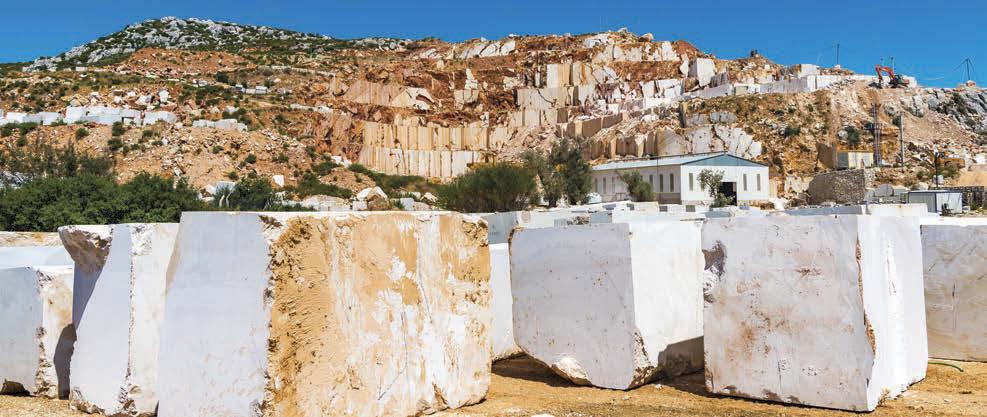
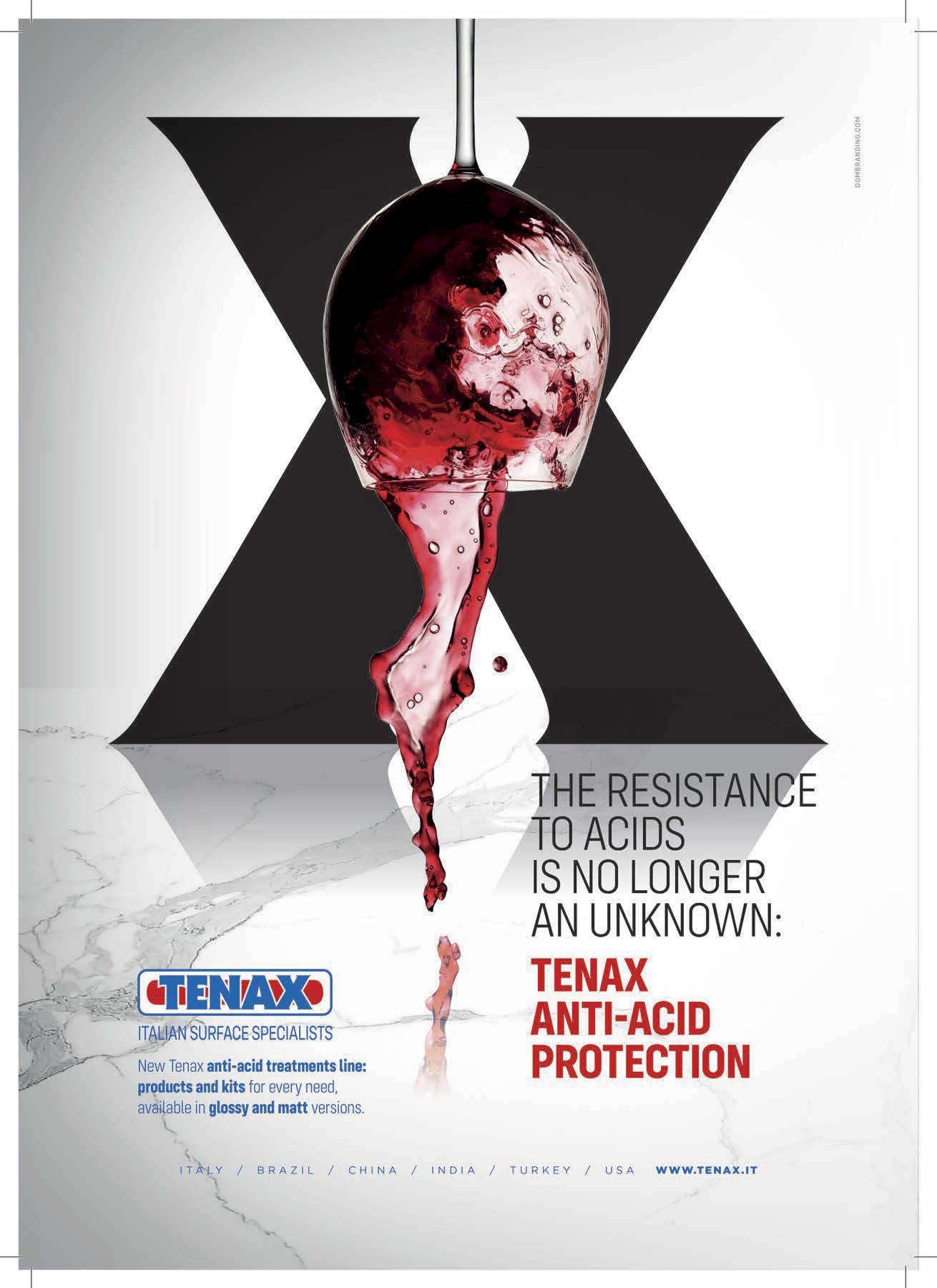

Regno Unito: posticipato al 2025 obbligo marcatura UKCA
Il Dipartimento per le Imprese, l'Energia e la Strategia Industriale britannico (BEIS) lo scorso 14 novembre ha annunciato che il riconoscimento dell’ammissibilità della marcatura CE per beni, attrezzature, apparecchi e macchinari destinati al mercato del Regno Unito varrà sino al 31 dicembre 2024. Pertanto l’obbligo di applicazione del nuovo marchio UKCA (UK Conformy Assessed, che va a sostituire la marcatura CE per il mercato britannico) scatterà per le Aziende solo a partire dal 1° gennaio 2025 e non dal 1° gennaio 2023 come inizialmente previsto dal governo di Londra. È possibile consultare la nota dell’annuncio al seguente link: www.gov.uk/government/news/businesses-to-be-given-uk-product-marking-flexibility Businesses to be given UK product marking flexibility (GOV.UK, 14 Nov 22)
ReBuild Ukraine-Italia: le Imprese italiane per la ricostruzione ucraina
Lo scorso 15 novembre si è svolta la conferenza online "ReBuild Ukraine-Italia", organizza dalla Camera di Commercio Italiana per l'Ucraina e patrocinata, tra gli altri, dal Ministero delle Imprese e del Made in Italy e dal Ministero degli Affari Esteri e della Cooperazione Internazionale, oltre ad altre importanti istituzioni italiane e ucraine. Durante i lavori sono state illustrate le sfide umanitarie, sociali ed economiche che dovrà affrontare il Paese, sottolineando altresì le opportunità che si presenteranno per le Imprese italiane non appena terminata la crisi bellica in corso e inizierà il processo di ricostruzione ucraina, per cui sono già stati stimati 800 miliardi di USD.
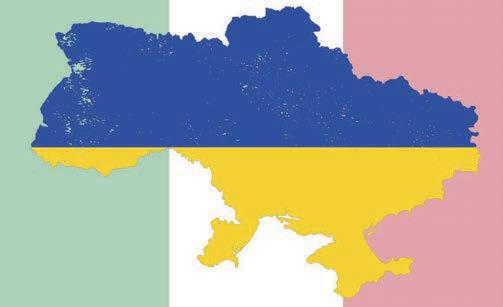

United Kingdom: the obligation to apply UKCA marking postponed to 2025
On November 4 Great Britain’s Department for Business, Energy and Industrial Strategy (BEIS) announced that recognition of the admissibility of CE marking for goods, equipment, apparatus and machinery destined for its market will be valid until December 2024. Therefore, the obligation to apply UK Conformity Assessed (UKCA) marking that will replace CE marking for the British market, will take force only on January 1, 2025, and not on January 1, 2023 as initially foreseen by the British government. The announcement can be consulted at: Businesses to be given UK product marking flexibility (GOV.UK, 14 Nov 22)
Rebuild Ukraine-Italy: Italian companies to aid Ukraine reconstruction
November 15 was the date of the online conference “Rebuild Ukraine-Italia” organized by the Italian Chamber of Commerce for Ukraine and sponsored by, among others, the Business and Made in Italy Ministry and Ministry of Foreign Affairs and International Cooperation as well as important Italian and Ukrainian organizations. The conference illustrated the humanitarian, social and economic challenges that Ukraine will have to face, also emphasizing the opportunities there are for Italian companies as soon as the ongoing war comes to an end and the process of reconstructing Ukraine begins, whose estimated cost is $US 800 billion.
PNRR: a che punto siamo?
Confindustria ha attivato un servizio informativo di monitoraggio sullo stato di attuazione del PNRR italiano che, entro il 31 dicembre 2022, deve centrare una serie di obiettivi al fine di garantire all’Italia la ricezione della prossima rata del piano nazionale di recupero e resilienza. Nel primo semestre 2022 erano previsti 45 interventi, di cui 15 riforme e 30 investimenti. Per la quasi totalità degli interventi era previsto il conseguimento di traguardi, ovvero milestone, che sono stati conseguiti nei tempi previsti: il MEF ha quindi inviato lo scorso 29 giugno alla Commissione europea la richiesta relativa al pagamento della seconda rata dei fondi del PNRR e il 27 settembre la Commissione ha approvato la valutazione preliminare positiva della richiesta di pagamento per 21 miliardi di euro – di cui 10 di sovvenzioni e 11 di prestiti, al netto di prefinanziamenti - grazie al considerevole slancio riformatore in settori strategici fondamentali, quali l’impiego pubblico e gli appalti pubblici. Entro la fine di dicembre 2022, gli obiettivi da raggiungere saranno 16, mentre i traguardi 39, per un totale di 55 impegni da rispettare, e che daranno diritto a richiedere a Bruxelles la terza rata di finanziamenti pari a ulteriori 19 miliardi di euro. Tra i fattori cruciali nell’attuazione del PNRR, Confindustria sottolinea la necessità di avere la capacità di spendere queste risorse. Nei prossimi tre anni e mezzo l’Italia sarà infatti chiamata a impiegare circa 170 miliardi di euro: si tratta di una cifra imponente ed è quindi cruciale risolvere il problema – che è strutturale - dell’effettiva capacità delle amministrazioni, specie territoriali, di bandire ed eseguire le gare d'appalto successive alla ripartizione dei fondi.
PNRR: at what point are we?
Confindustria has activated an informative service monitoring the state of implementation of Italy’s National Recovery and Resilience Plan (PNRR), which by December 31, 2022, must meet a set of goals in order to ensure that the country adopts the next installment of the plan. In the first half of 2022, 45 interventions were foreseen, 15 of them reforms and 30 of them investments. Almost all of the interventions foresaw the achievement of goals, or milestones, that were reached within the expected times: on June 29 the Ministry of Economy and Finance (MEF) therefore sent the European Commission a request for payment of the second installments of PNRR funds and on September 27 the Commission approved a preliminary assessment of the request for payment of 21 billion euros – 10 billion in subsidies and 11 in loans, net of pre-financing – thanks to the considerable reformatory action in strategics sectors like public employment and public contracts. By the end of December 2022, there will be 16 goals to be reached and 39 milestones, for a total of 55 commitments to be respected, that will give the right to demand from Brussels the third installment of financing, a further 19 billion euros. Among the crucial factors in implementing the PNRR, Confindustria emphasizes the need to have the capability to spend the resources. In fact, in the next three and a half years Italy will be required to make use of some 170 billion euros: this is a huge sum and it is therefore crucial to solve the problem – which is structural – of the effective capability of the administrations, often territorial, to bid for and execute the contract tenders subsequent to division of the funds.

Macchinari innovativi: bando aperto per il Centro-Nord
Si segnala che è ancora aperto il bando di Invitalia dedicato a sostenere la realizzazione di investimenti innovativi da parte delle PMI del Centro-Nord d'Italia. La misura finanzia progetti con un importo minimo di 1 mln di euro finalizzati a favorire la trasformazione digitale delle Imprese dei settori manifatturiero e servizi. Sono valorizzati in particolare i programmi per la realizzazione di investimenti innovativi, sostenibili e con contenuto tecnologico elevato e coerente al piano nazionale Transizione 4.0. Rientrano fra le spese ammissibili: l’acquisto di macchinari, impianti e attrezzature, inclusi impianti fotovoltaici; opere murarie; programmi informatici e licenze d’uso; l’acquisizione di certificazioni ambientali.
Iperammortamento: sostituzione dei beni agevolati

L’Agenzia delle Entrate si è recentemente pronunciata sul tema dell’effettuazione degli investimenti sostitutivi, chiarendo che non può escludersi che in determinati casi l'Impresa abbia la necessità di sostituire i beni agevolati con beni più performanti e pur sempre nella prospettiva di accrescere il livello di competitività tecnologica in ottica 4.0. Si precisa inoltre che il recapture del beneficio in caso di cessione a titolo oneroso o delocalizzazione dei beni agevolati non opera nell'ipotesi in cui il bene iper-ammortizzabile ceduto venga sostituito da un altro dalle caratteristiche uguali o superiori. Si conclude che in determinate condizioni non viene meno la fruizione delle residue quote di iperammortamento.


Innovative machinery: call open for Central-Northern Italy
We notify readers that Invitalia’s call to support creation of innovative investments by SME in centralnorthern Italy is still open. The measure finances projects of a minimum of 1 million euros to foster the digital transformation of manufacturing and services companies. Particularly valorized are projects for innovative investments, sustainable, with high technological content and coherent with the national Transition 4.0 plan. Included in admissible expenditures are: the purchase of machines, installations and equipment, including photovoltaic installations: masonry work; computer programs and use licenses; acquisition of environmental certifications.
The Italian Internal Revenue Service recently passed judgment on the issue of replacement investments, clarifying that it cannot be excluded that in certain cases a company will have found it necessary to replace facilitated goods with the higher-performance, always from the standpoint of increasing the degree of competitiveness from the 4.0 viewpoint. It further specifies that the recapture of the benefit in the case of ceding as too costly or delocalizing the facilitated goods does not apply in the eventuality that the hyper-amortized good ceded is replaced by another with equal or superior characteristics. It concludes that in certain conditions there can be use of the residual amounts of hyper-amortization.

Ue, crescita Italia nel 2022 sale al +3,8%
Nelle previsioni economiche d'autunno la Commissione Ue ha rivisto al rialzo le attese sulla crescita del Pil dell'Italia nel 2022, vista ora al 3,8%, rispetto al 2,9% delle stime diffuse a luglio. A causa degli effetti sulla domanda globale della guerra in Ucraina e della maggior inflazione, Bruxelles ha tagliato invece la previsione sul 2023, con l'economia italiana attesa in aumento dello 0,3%, rispetto allo 0,9% indicato in precedenza. Per il 2024 l'attesa è che il Pil italiano riprenda a salire per portarsi al +1,1%. Per quanto riguarda l'Eurozona nel suo complesso il Pil dovrebbe attestarsi al +3,2% quest'anno (contro il +2,6% di luglio), per rallentare a +0,3% nel 2023 (da +1,4% delle stime precedenti) e riportarsi sul +1,5% nel 2024.
Indonesia, la futura capitale Nusantara sarà a zero emissioni
La Banca asiatica di sviluppo Adb e il governo dell’Indonesia hanno lanciato uno studio per mappare il progetto per la creazione della futura capitale nazionale del Paese, Nusantara, con l’obiettivo di identificare, tracciare, neutralizzare e ridurre le emissioni di carbonio. L'annuncio è stato dato in occasione della recente COP27 (Conferenza delle Nazioni Unite sui cambiamenti climatici) di Sharm el-Sheikh ed è in linea con l’impegno dell’Indonesia sull’accordo di Parigi. Tra le altre cose, il piano di sviluppo dell'area urbana di Nusantara darà la priorità ai materiali a basse emissioni di carbonio per l’edilizia, alla massimizzazione dell’energia proveniente da fonti rinnovabili e allo sviluppo dei trasporti pubblici.


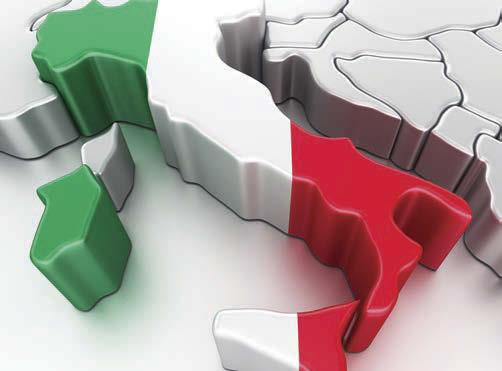
EU: in 2022 Italy’s growth at 3.8%
In its autumn outlook, the European Commission heightened its expectations for Italy’s increase in GDP in 2022, now estimated as 3.8%, from the 2.9% foreseen in July. Due to the effects on global demand of the war in Ukraine and higher inflation, Brussels instead downsized its forecast for 2023, with the Italian economy expected to grow by 0.3% rather than the 0.9% previously estimated. For 2024 it is expected that Italian GDP will begin to rise again, to 1.1%. For the Eurozone as a whole, GDP growth should be of 3.2% this year (against the +2.6% foreseen in July), slowing to +0.3% in 2023 (from +1.4% in previous estimates) and back up to 1.5% in 2024.
Indonesia, the future capital, Nusantara, will have zero emissions
The Asian Development Bank (ADB) and the Indonesian government have launched a study to devise a roadmap for creating the country’s future capital, Nusantara, with the aim of identifying, tracing, neutralizing and reducing carbon emissions. The announcement was made during the recent COP27 (United Nations Conference on Climate Change) held in Sharm el-Sheikh and is in line with Indonesia’s commitment to the Paris Accords. Among other things, development of the urban area of Nusantara will give priority to materials with low carbon emissions for building, to maximizing energy from renewables and to developing public transportation.
Si è svolto lo scorso 18 novembre il webinar “Aggiornamento Trasferte del Personale all’Estero” organizzato da FEDERMACCHINE in collaborazione con lo Studio Arletti&Partners. Durante il webinar sono state approfondite tematiche quali: l’aggiornamento sulle vigenti restrizioni Covid-19 nei principali Paesi EXTRAEU con Focus su Cina, Turchia, Russia, Vietnam, Corea del Sud, India, Giappone e Iran; i nuovi obblighi per trasferte nei Paesi EU derivanti dall’introduzione della recente direttiva EU 1152/2019; l’aggiornamento sulla sicurezza sul lavoro all’estero con l’illustrazione delle recenti sentenze e gli effetti sulle procedure aziendali da adottare per prevenire la responsabilità dell’azienda e dei vertici aziendali; BREXIT, ovvero come pianificare il lavoro in UK; USA, ovvero come pianificare il lavoro negli Stati Uniti; la tassazione dei cantieri e delle vendite all’estero. Relatori dell’evento sono stati i rappresentanti del team operativo di Arletti&Partners, società esperta e specializzata in mobilità internazionale delle risorse umane da tempo partner di FEDERMACCHINE per assistere le imprese su queste tematiche. La partecipazione al webinar è stata a titolo gratuito per le Aziende Associate a CONFINDUSTRIA MARMOMACCHINE, in quanto aderente a FEDERMACCHINE, e rientra nel quadro dei servizi informativi e di approfondimento che l’Associazione garantisce alle proprie Associate su temi di particolare sensibilità e rilevanza per le Imprese. Gli atti e le presentazioni effettuate durante il webinar sono stati messi a disposizione delle Aziende Associate tramite l’area riservata del sito www.assomarmomacchine.com Per ogni informazione in merito a questa iniziativa e per l’accesso a queste risorse documentali è possibile contattare la Segreteria dell’Associazione.
Held on November 18 was the “Update on Foreign Travel for Personnel” webinar that FEDERMACCHINE organized together with the Arletti & Partners consultancy firm. The webinar dealt with updates on Covid-19 restrictions in force in non-EU countries with a focus on China, Turkey, Russia, Vietnam, South Korea, India, Japan and Iran; the new travel obligations in EU countries introduced by the recent EU directive 1152/2019; updates on foreign travel security with explanations of recent sentences and their effects on corporate procedures to adopt to avoid corporate and executive responsibility; Brexit, or how to plan work in the UK; USA, or how to plan work in the United States; worksite taxation and foreign sales. Speaking at the event were representatives of Arletti & Partners, a firm specialized in international human resources travel and a longstanding partner of FEDERMACCHINE in helping its members with these issues. The webinar was offered free of charge to CONFINDUSTRIA MARMOMACCHINE members, since the association belongs to FEDERMACCHINE, and was part of the information services the association offers its members on topics of particular sensitivity and relevance for them. The minutes taken and presentations made during the webinar are available in the reserved area of www.assomarmomacchine.com. For further information about this event and access to its documentation, contact the association’s secretarial office.

SAUDI VISION 2030: l’Arabia che verrà
Storicamente la più importante economia del Medio Oriente, l’Arabia Saudita ha introdotto recentemente una serie di misure economiche con l’obiettivo di rimodellare la struttura economica del Paese, tradizionalmente trainata dalla produzione di greggio e combustibili fossili. Tra i provvedimenti più significativi figurano una limitata deregolamentazione, lo stimolo degli investimenti stranieri e la privatizzazione di alcuni settori dell'economia. Il tutto va sotto il nome di SAUDI VISION 2030, una vera e propria tabella di marcia per sviluppare vari settori industriali diversi da quelli collegati agli idrocarburi e che dovrebbe introdurre cambiamenti commerciali e sociali di ampio respiro. Tra i settori oggetto di riforme un ruolo centrale lo riveste quello dell’edilizia residenziale, che attrae la più grande spesa del governo nell'ambito del NTP, ovvero il Programma di Trasformazione Nazionale 2020 che fa parte dell'attuazione della SAUDI VISION 2030 e ha coinvolto 24 enti governativi sauditi. Investimenti cospicui che potrebbero tradursi in grandi potenzialità in termini di indotto anche per l’impiego di pietre autenticamente naturali, uno dei materiali preferiti nel mondo arabo e nell’area del Golfo. Va sottolineato come nel primo semestre del 2022 l’Arabia Saudita è stato il quinto buyer per importanza, in termini di valore, di prodotti lapidei lavorati italiani, con acquisti per oltre 33 milioni di euro e un incremento percentuale del 51% rispetto allo stesso periodo del 2021. Un dato che a medio termine potrebbe incrementarsi in modo significativo, anche in considerazione del fatto che tra gli obiettivi di SAUDI VISION 2030 vi è la crescita decisiva del settore privato e l’attrazione, come dicevamo sopra, di investimenti esteri sempre più cospicui..
SAUDI VISION 2030: the Arabia that will be
Historically the Middle East’s biggest economy, Saudi Arabia recently introduced a series of measures intended to remodel the country’s economic structure, traditionally driven by crude oil and fossil fuel production. Among the most significant measures are limited deregulation, stimulation of foreign investments and the privatization of some economic sectors. All under the name of SAUDI VISION 2030, an authentic timetable for developing various industrial sectors different from hydrocarbons that should lead to broadreaching business and social changes. Among the sectors to undergo reform a central role is played by housing, which receives the largest share of government spending under the National Transformation Plan (NTP) that is part of implementing SAUDI VISION 2030 and involves 24 Saudi government boards. Big investments that could have great potential also for the use of authentically natural stone, one of the materials of choice in the Arab world and in the Gulf. It should be emphasized that in the first half of 2022 Saudi Arabia was the fifth-ranking buyer in value terms of Italian finished stone products, with purchases worth more than 33 million euros and an increase of 51% from the same period in 2021. A figure that in the medium term could rise significantly, also considering that one of the aims of SAUDI VISION 2030 is decisive growth in the private sector and, as we said, attracting larger and larger foreign investments.

CDP e CONFINDUSTRIA promuovono Business Matching, la piattaforma che fa incontrare Imprese italiane ed estere
Cassa Depositi e Prestiti (CDP) e CONFINDUSTRIA lo scorso 20 ottobre hanno siglato un Memorandum of Understanding che amplia la cooperazione e la sinergia fra le due istituzioni a sostegno dell’internazionalizzazione delle Aziende del nostro Paese. Obiettivo dell'accordo è promuovere, attraverso l’utilizzo della piattaforma Business Matching di CDP, lo sviluppo delle relazioni commerciali tra Imprese italiane ed estere, rafforzare il numero di PMI esportatrici, favorire una maggiore partecipazione dell’Italia alle catene globali del valore, avviare una sinergia sugli strumenti digitali a favore dell’export e dell’internazionalizzazione,. Business Matching (https://businessmatching.cdp.it/) è il nuovo strumento digitale e gratuito sviluppato da CDP in collaborazione con il Ministero degli Affari Esteri e della Cooperazione Internazionale (MAECI) e SIMEST, e dedicato alle Imprese italiane e straniere che vogliono crescere sui mercati esteri. Lanciata a novembre 2021, la piattaforma ha raggiunto nei primi sei mesi gli obiettivi che erano stati prefissati per un anno. Ad oggi il numero complessivo delle Imprese registrate è di oltre 3.000, delle quali 1.780 italiane e circa 1.250 estere. Dall’avvio della funzionalità di matching per le Imprese, sono stati proposti oltre 15.000 match fra Aziende italiane e straniere e oltre 250 sono quelli già realizzati. Dopo aver avviato la sua operatività in India, Cina, Giappone, Marocco e Messico, la piattaforma ha ampliato il suo raggio in Indonesia lo scorso 19 settembre. Fra dicembre 2022 e gennaio 2023 la piattaforma sarà aperta anche alla Corea del Sud e agli Stati Uniti.
CDP and CONFINDUSTRIA promote Business Matching, the website where Italian and foreign businesses meet
On October 20 Cassa Depositi e Prestiti (CDP - Savings and Loans Bank) and CONFINDUSTRIA signed a Memorandum of Understanding that broadens cooperation and synergy between the two organizations in support of internationalizing Italian companies. The aim of the agreement is to use CDP’s Business Matching website to develop business relations between Italian and foreign companies, increase the number of exporter SMEs, foster greater Italian participation in global value chains and create synergy between the digital tools that can increase exports and internationalization. Business Matching (www.businessmatching.cdp.it/) is the new, free website the CDP developed in collaboration with the Italian Ministry of Foreign Affairs and International Cooperation (MAECI) and SIMEST, and dedicated to Italian and foreign businesses that want to grow on foreign markets. Launched in November 2021, in its first six months it reached the goals it had set for the entire year. To date, more than 3,000 businesses have registered, 1,780 Italian and some 1,250 foreign. Since its start, 15,000 matches have been proposed between Italian and foreign companies and more than 250 have been implemented. After initially operating in India, China, Japan, Morocco and Mexico, the site widened its range to Indonesia on September 19, Between December 2022 and January 2023 it will also be available in South Korea and the United States. After registering free of charge, the Italian company is invited to indicate its intentions and business strategy towards foreign markets, along with the profile of the foreign counterparts

Dopo essersi registrata gratuitamente, l’Impresa italiana è invitata a indicare le proprie intenzioni e la propria strategia di business verso i mercati esteri e il profilo delle controparti straniere che desidera incontrare. A questo punto, l’Azienda riceverà la notifica di possibili abbinamenti con le controparti e la relativa percentuale di affinità sulla base del proprio profilo e degli obiettivi inseriti in sede di profilazione. È possibile, inoltre, visionare le informazioni sull’Impresa estera e scegliere se accettare o meno il contatto proposto dall’algoritmo. In caso di esito positivo, si può fissare un incontro virtuale in uno spazio dedicato (virtual room) all’interno della piattaforma con disponibilità, se necessario, di attivare un servizio di interpretariato esterno. Per facilitare l’accesso e permettere alle imprese di fruire della piattaforma in mobilità, restando connessi e ricevendo notifiche push, CDP ha creato una APP dedicata, già disponibile sui principali store. Inoltre, sul portale online sono state anche pubblicate schede focus con informazioni e approfondimenti su ogni Paese in cui è operativo il servizio. Barbara Beltrame Giacomello, Vice Presidente per l’Internazionalizzazione di CONFINDUSTRIA, ha dichiarato: “Facilitare la crescita e ampliare i margini di cooperazione commerciale ed economica tra le nostre Imprese e nuovi partner esteri è il nostro compito principale nella realizzazione delle iniziative di promozione internazionale. In un contesto internazionale mutevole e che genera incertezze, perseguire tale obiettivo richiede il pieno sfruttamento di tutti gli strumenti utili che possono supportare la proiezione e la vocazione estera del nostro tessuto imprenditoriale: la piattaforma Business Matching di CDP è sicuramente uno di questi. La Partnership siglata con un partner da sempre strategico come CDP è frutto della volontà di condividere l’impegno a rafforzare la presenza delle Imprese sui mercati internazionali con il supporto delle Associazioni territoriali e di settore, il cui contributo è punto fondamentale dell'azione estera di CONFINDUSTRIA”. Il Memorandum, della durata complessiva di due anni, prevede fra l’altro la promozione della piattaforma CDP Business Matching presso il network associativo e imprenditoriale di CONFINDUSTRIA, l’organizzazione congiunta di una serie di eventi digitali, nonché il coinvolgimento delle Associazioni di Confindustria nelle iniziative e nelle attività previste già a partire dalle prossime settimane. Alle Imprese associate a CONFINDUSTRIA che si registreranno sulla Piattaforma sarà inoltre garantito da CDP un servizio premium di assistenza gratuito a cui sarà possibile accedere tramite e-mail (infoimprese@cdp.it) e call center (800.020.030). it wishes to meet. At this point the company will be notified of possible matchings with them and their percentage of affinities based on its profile and aims. It is also possible to view information on the potential foreign match company and decide whether or not to accept the contact the algorithm has proposed. If yes, a meeting can be set up in a virtual room at the website, with an interpreter service available if needed. To facilitate use on mobile devices, staying connected and getting push notices, CDP has created a dedicated app already available at its stores. In addition, focus files have been published on the site, with information about and descriptions of every country in which the service is active. Barbara Beltrame Giacomelli, CONFINDUSTRIA’s Vice President for Internationalization, declared: “Facilitating growth and broadening margins for commercial and economic cooperation between Italian businesses and new foreign partners is our principal task in creating international promotion projects. In a changing international context that generates uncertainties, pursuing this goal requires taking full advantage of all the tools that can aid the projection and foreign vocation of our enterprises: the CDP Business Matching site is certainly one of these. The agreement signed with an always strategic partner like CDP is the result of a desire to share this commitment and strengthen the presence of Italian companies on foreign markets with the support of territorial and sector organizations, whose contributions are fundamental to CONFINDUSTRIA’s work abroad”. The Memorandum, which has a two-year duration, among other things includes promoting the CDP Business Matching website with Confindustria’s member network, joint organization of a series of digital events, and involving CONFINDUSTRIA associations in the projects and work that will commence in the coming weeks. For CONFINDUSTRIA members registering on the site CDP will guarantee a freeof-charge premium service that can be accessed by email (infoimprese@cdp.it) or through its call center (800.020.030).





